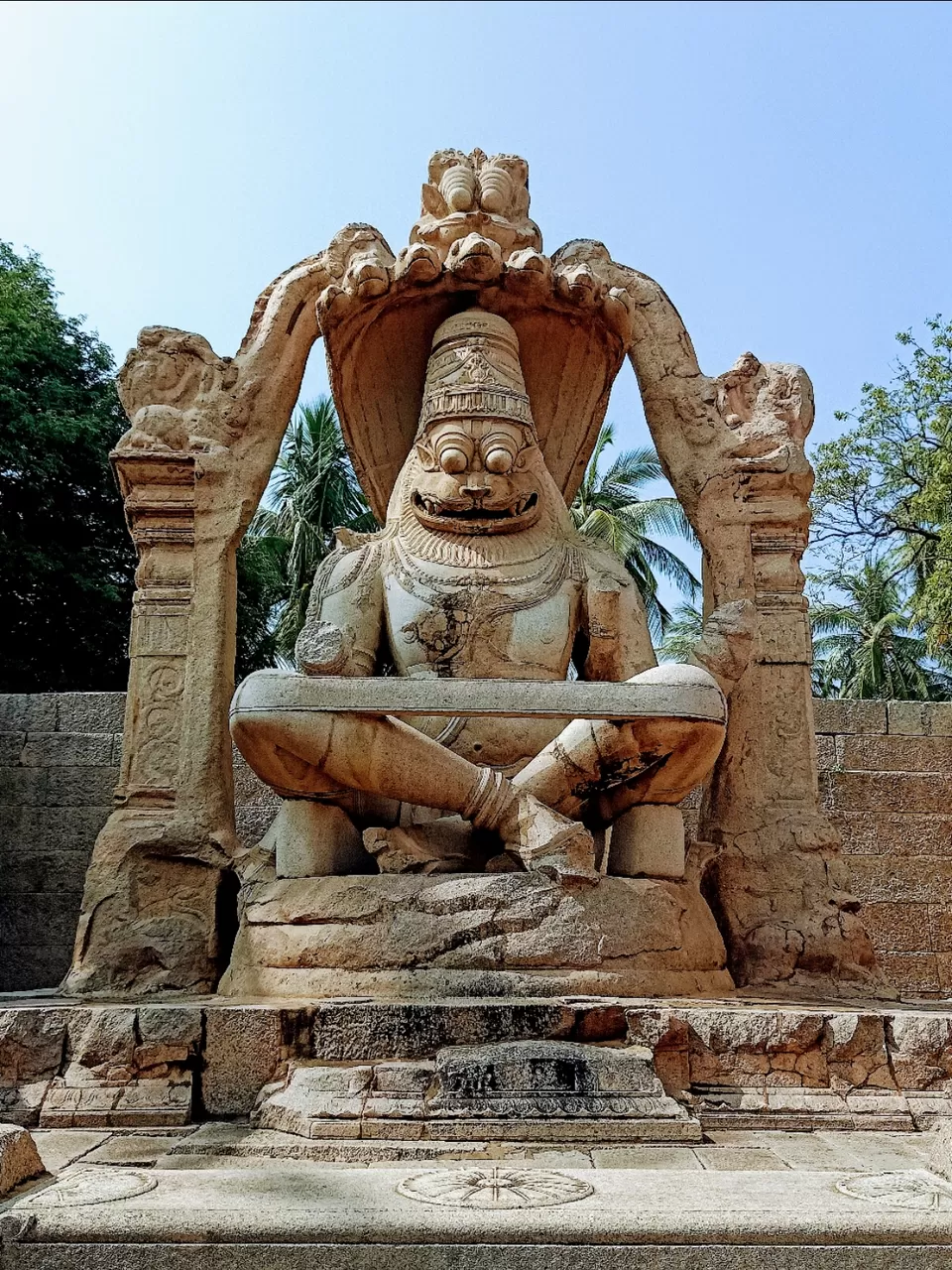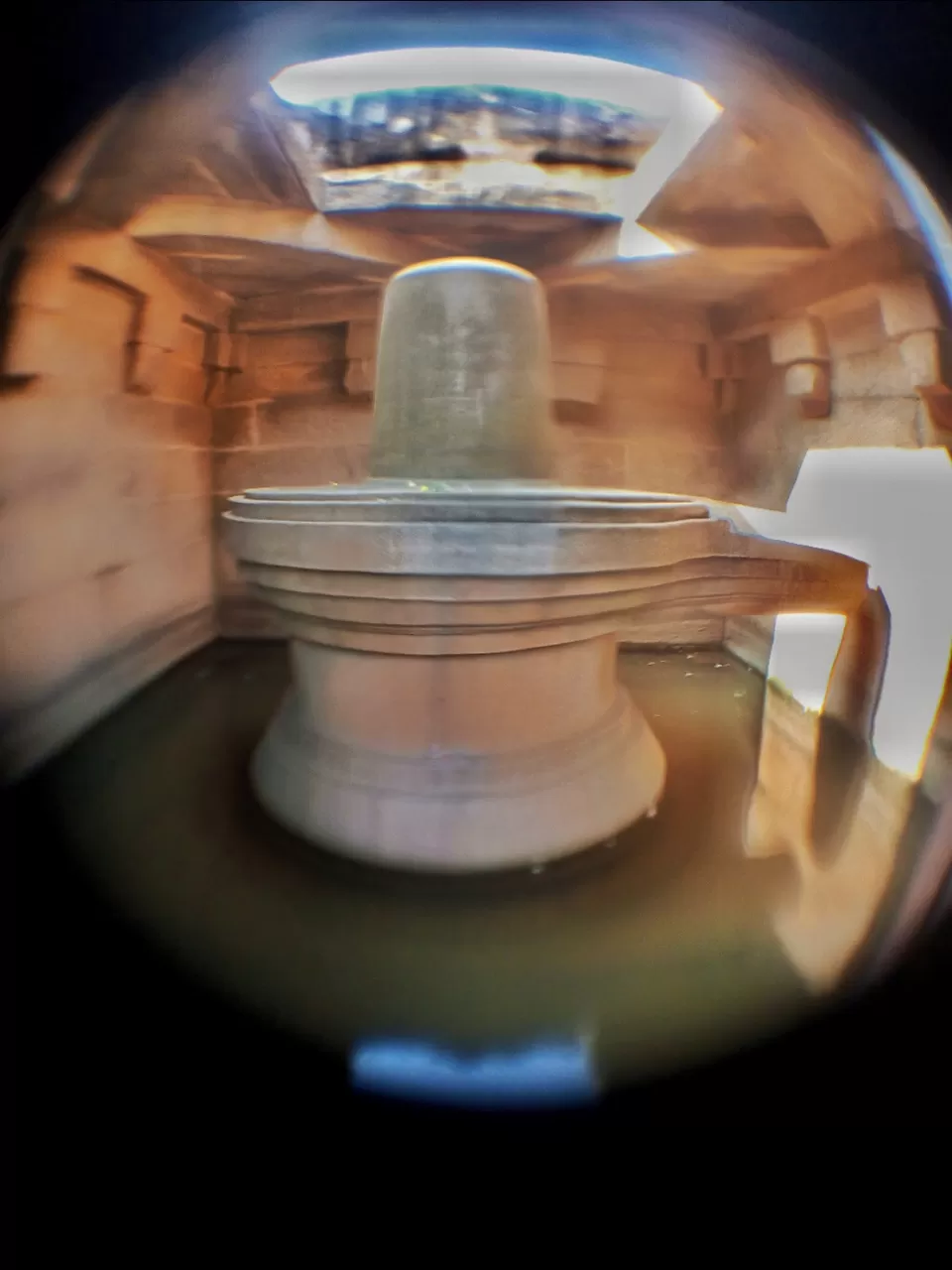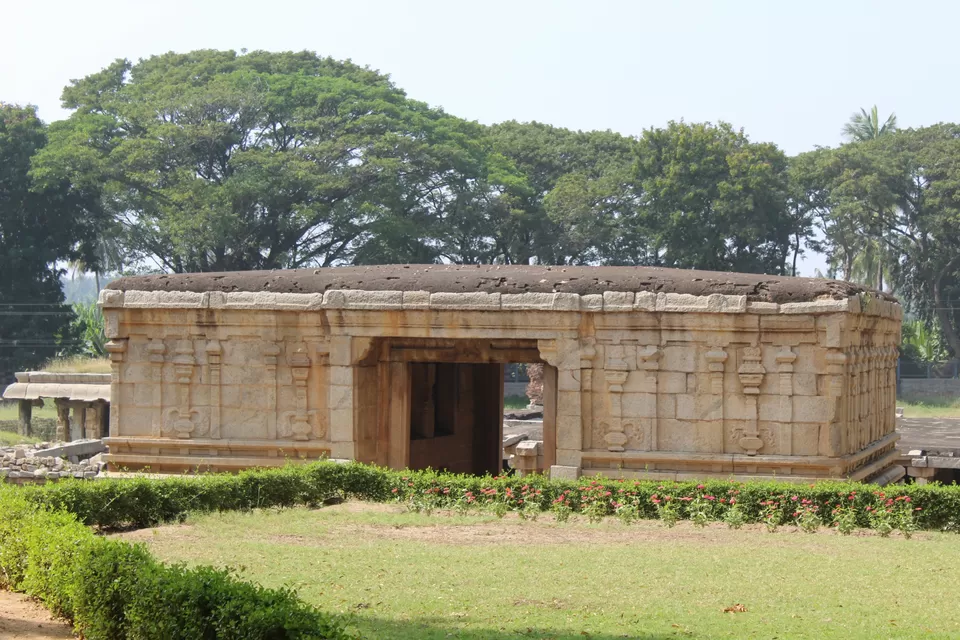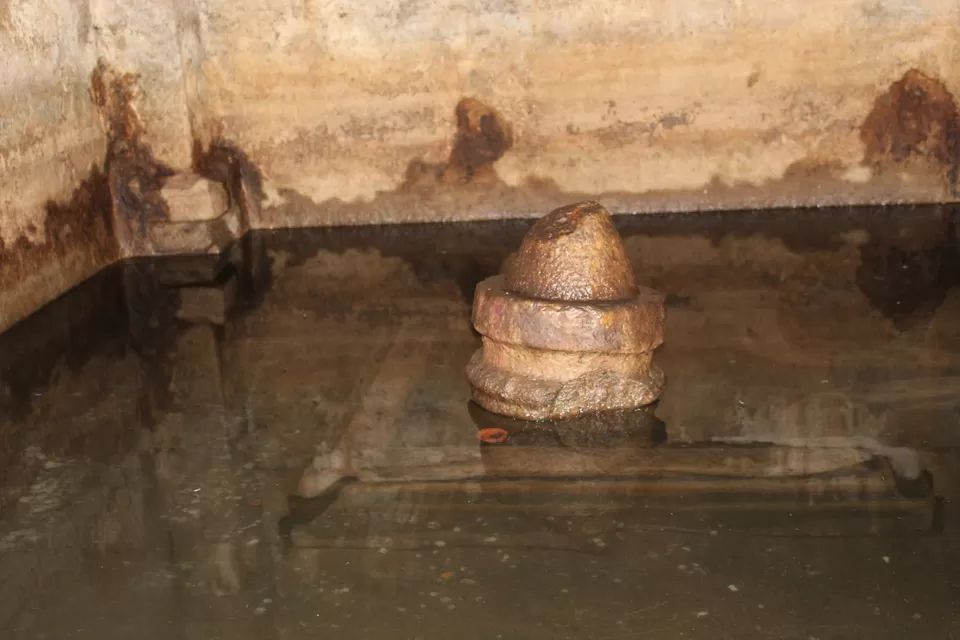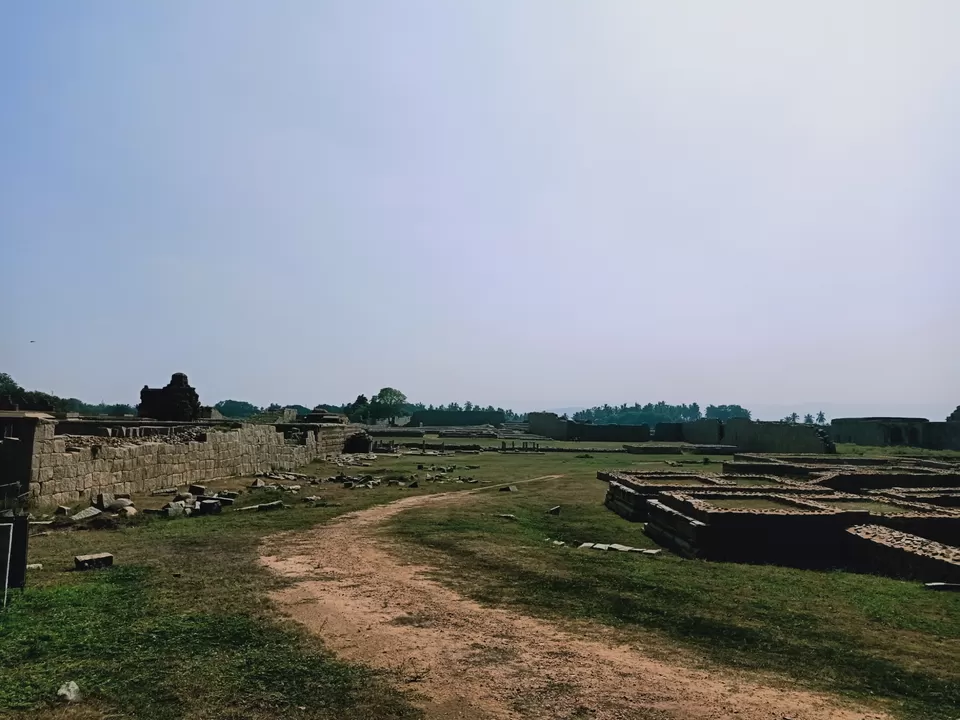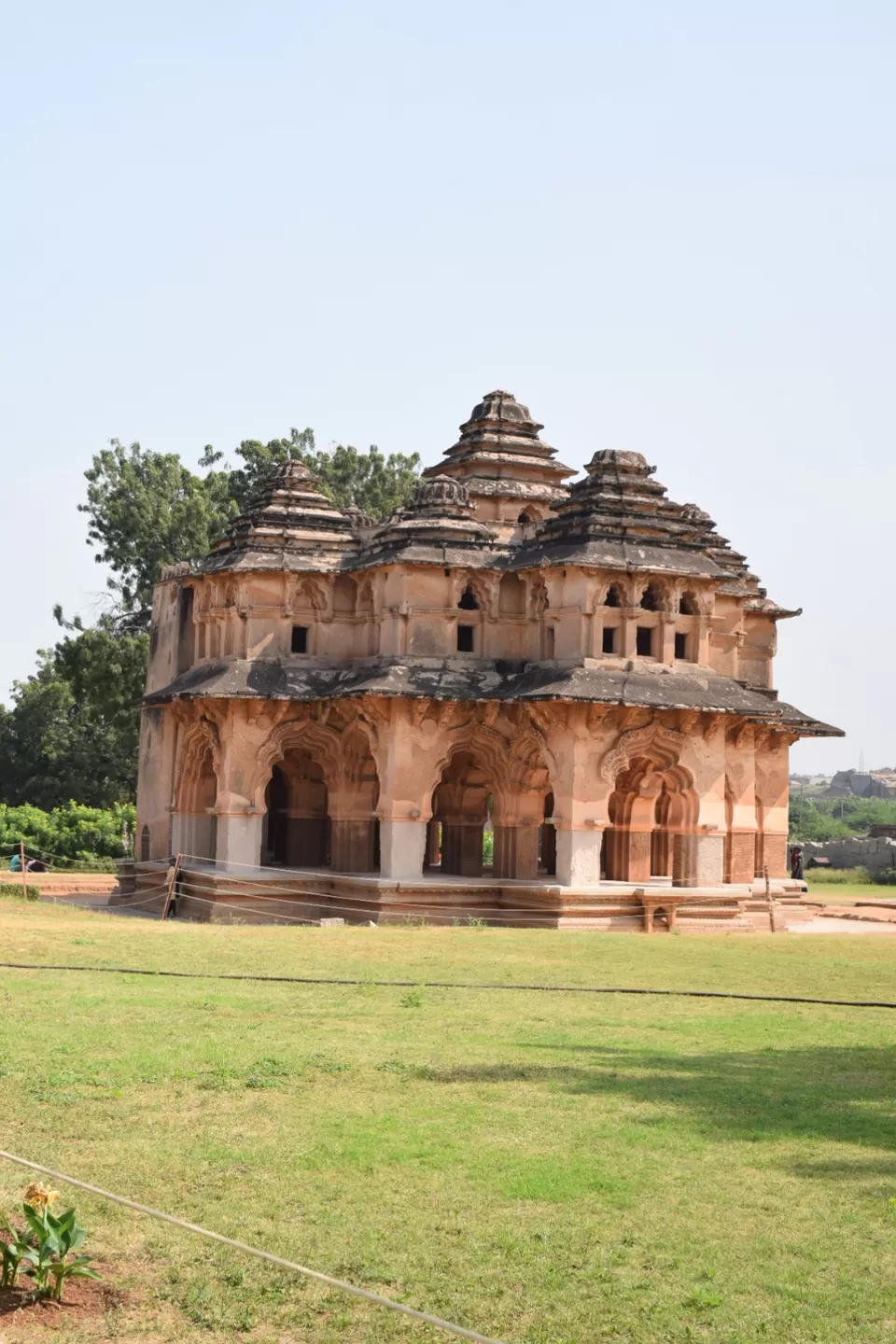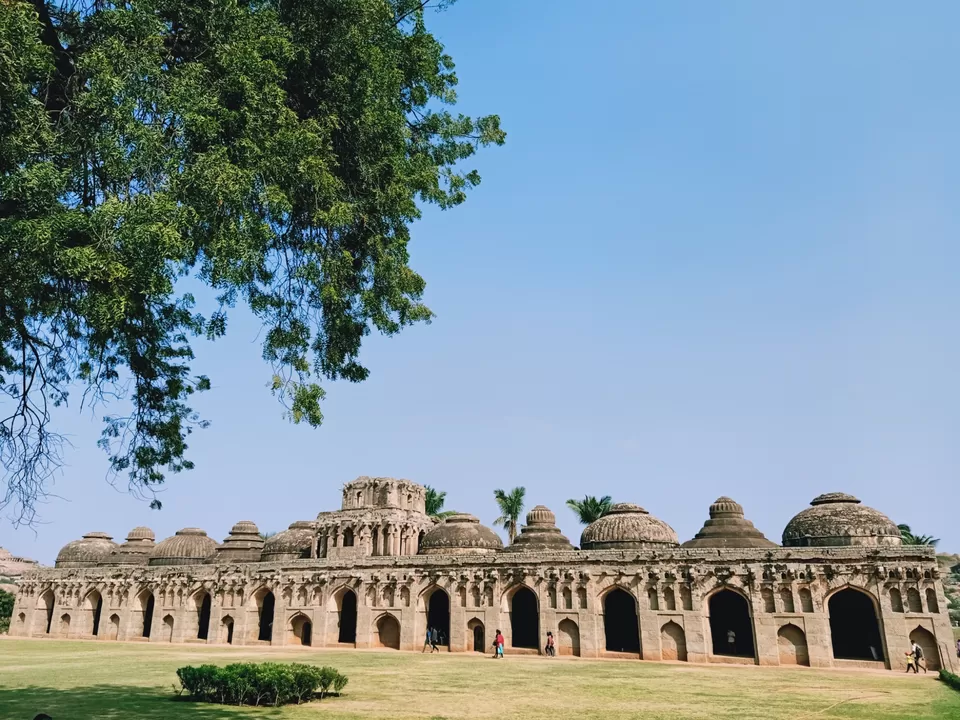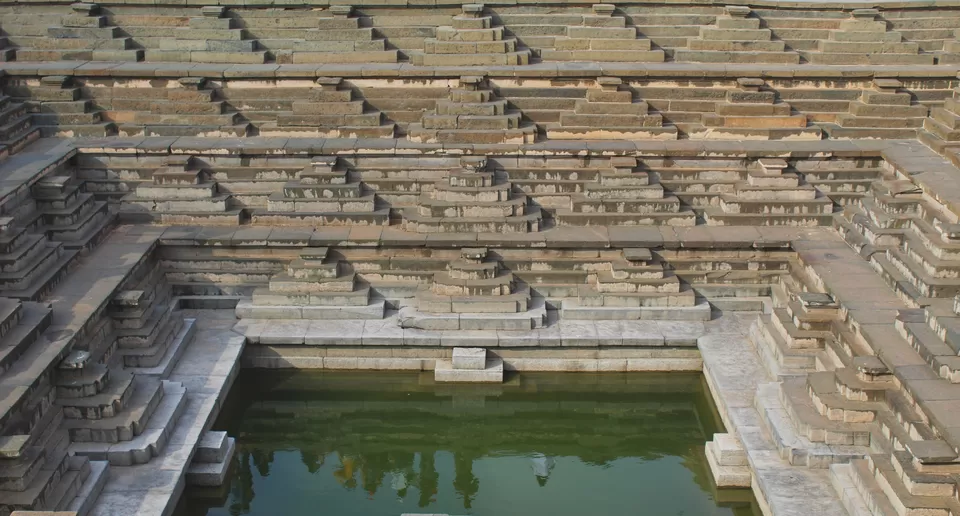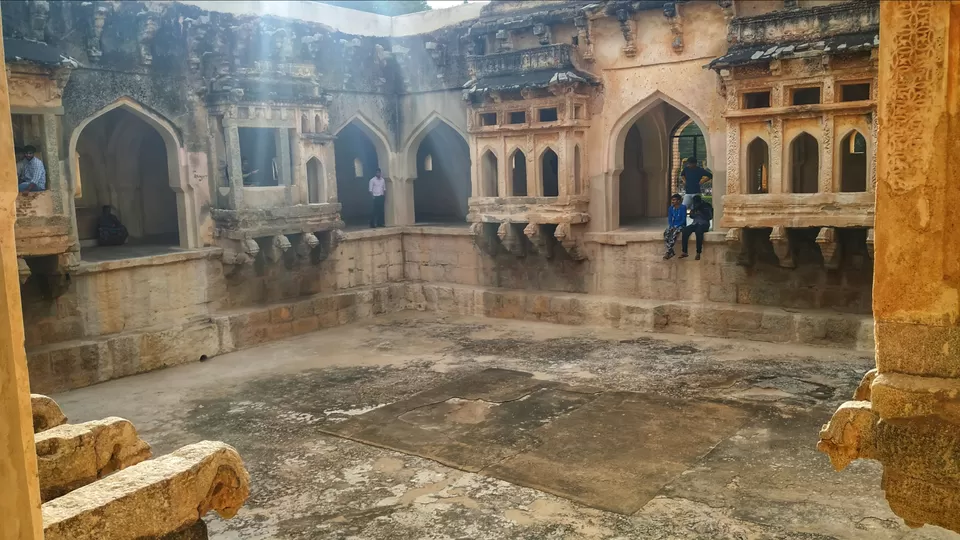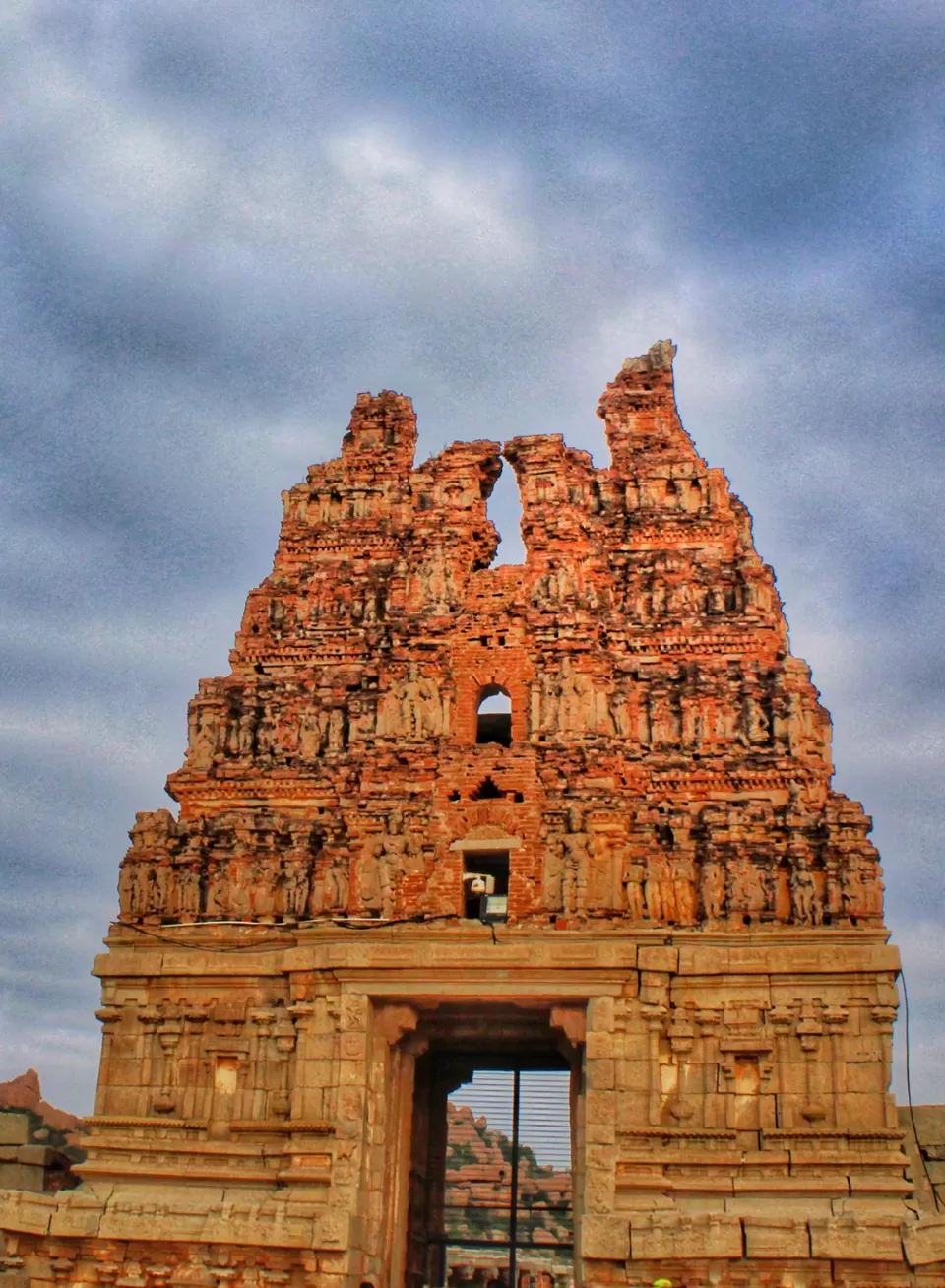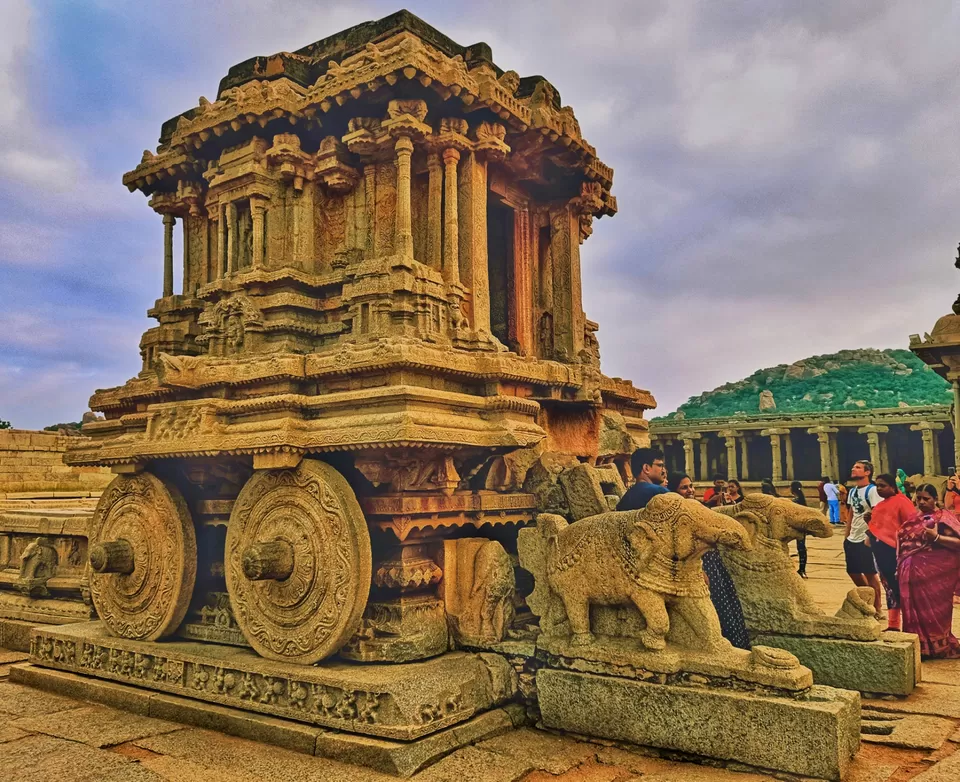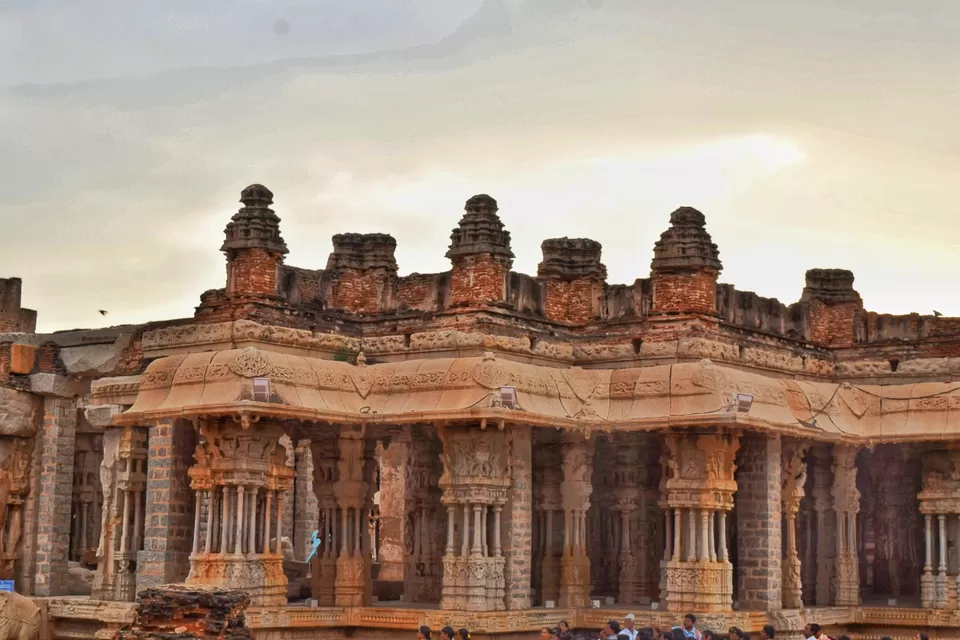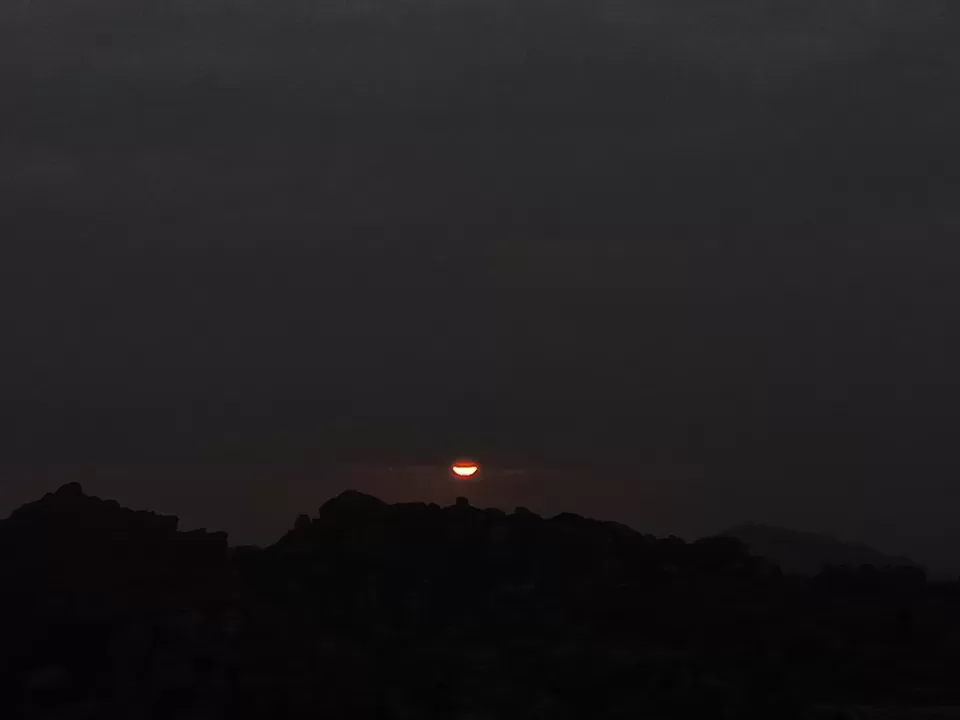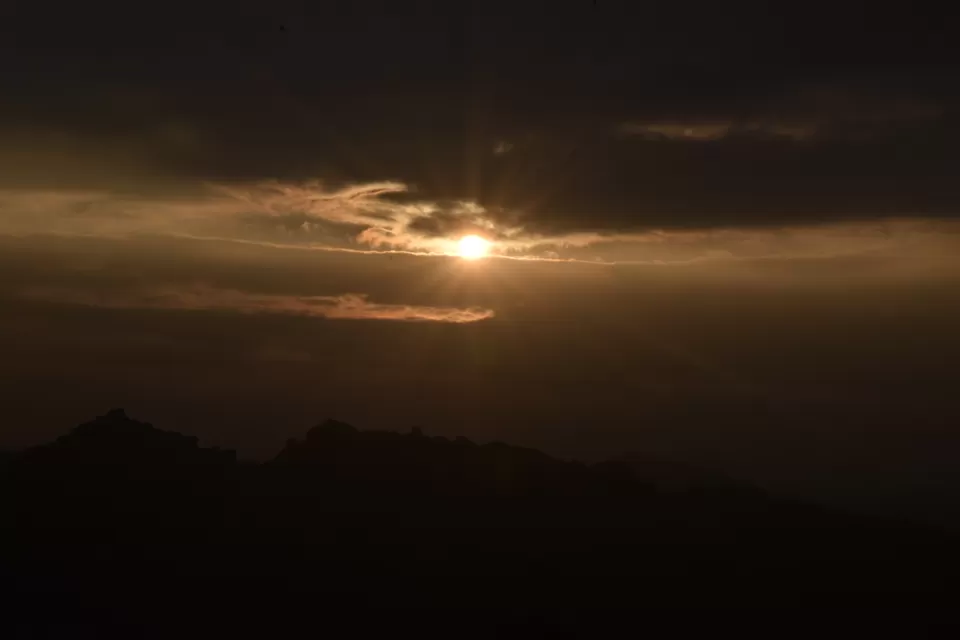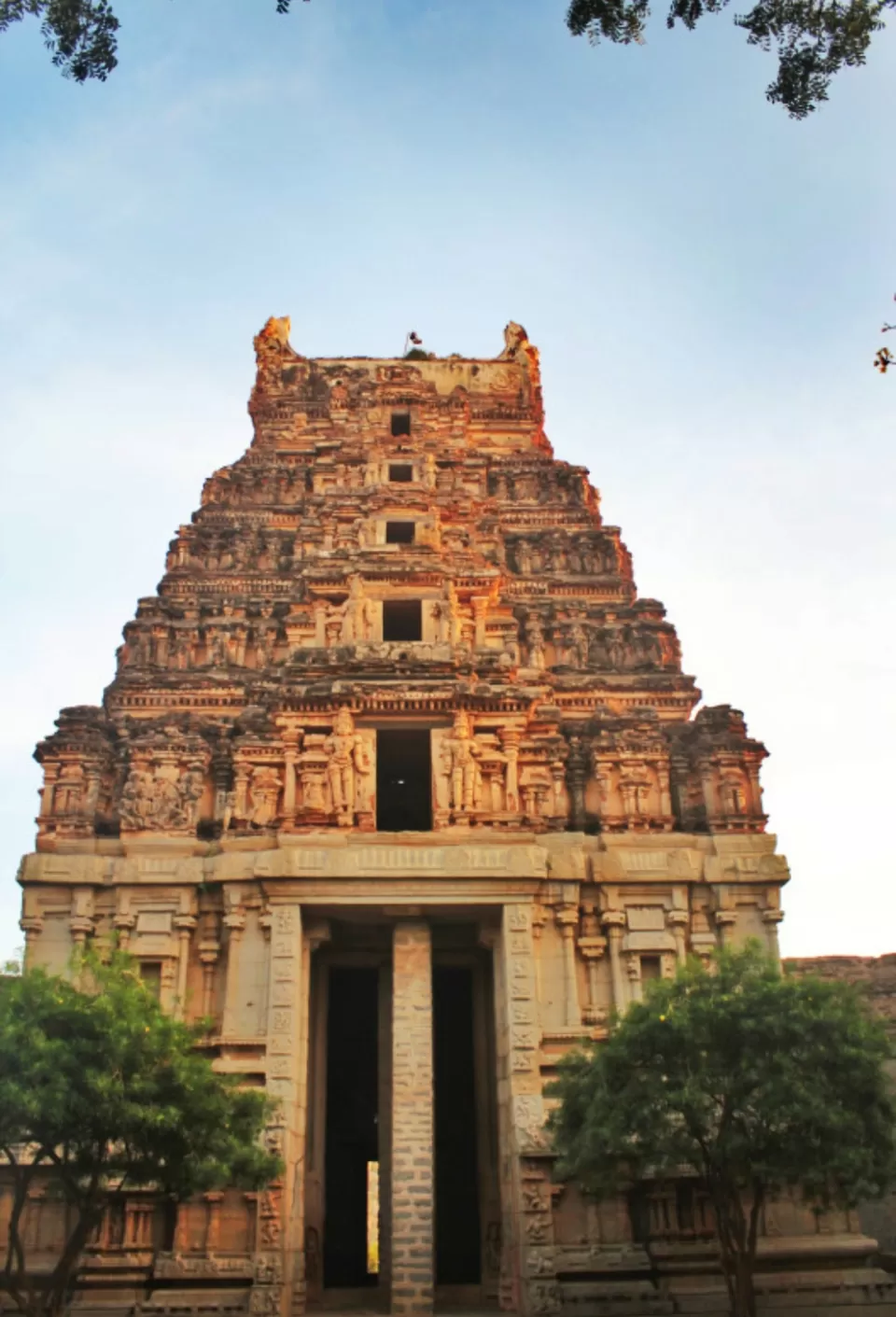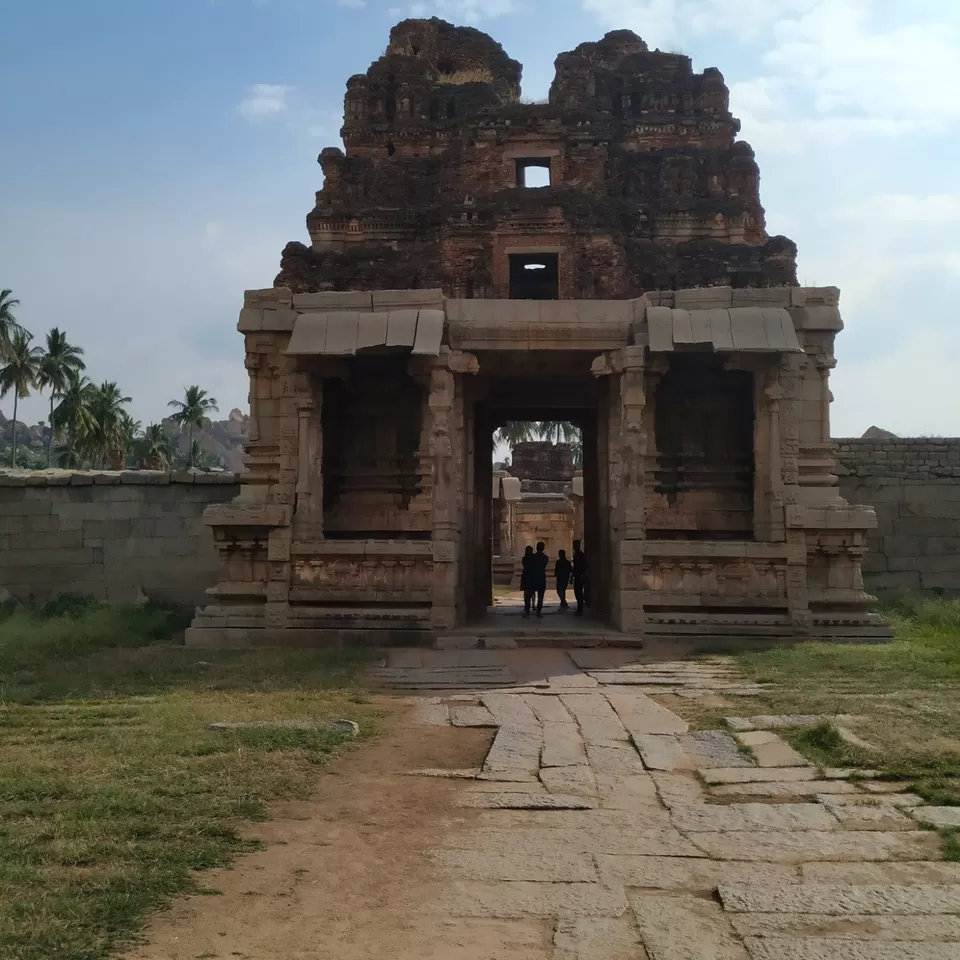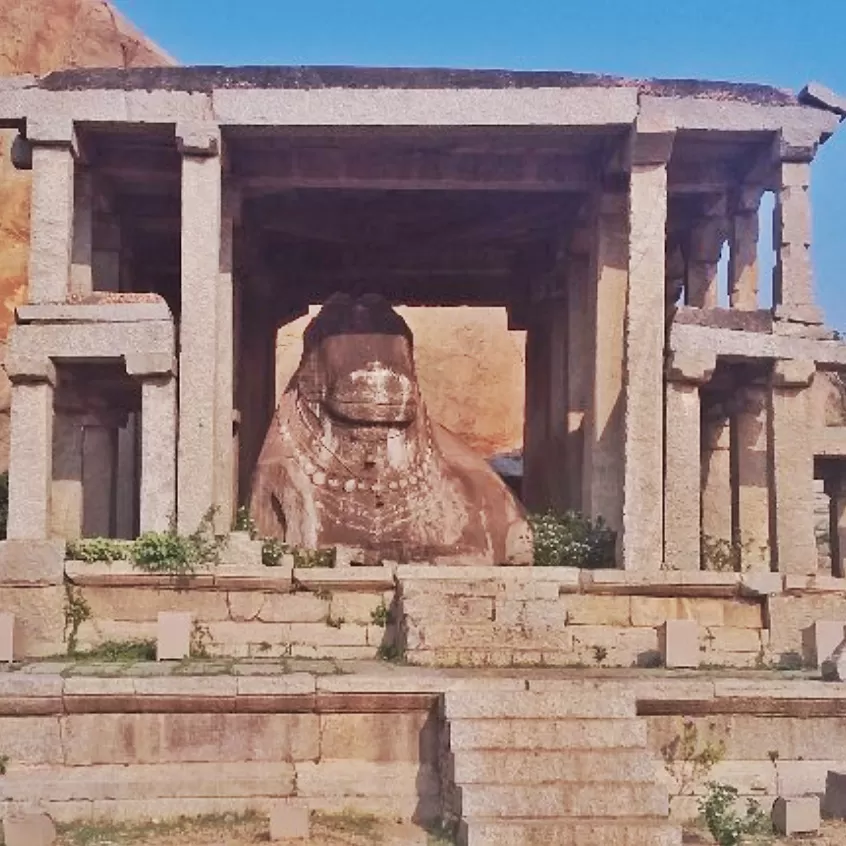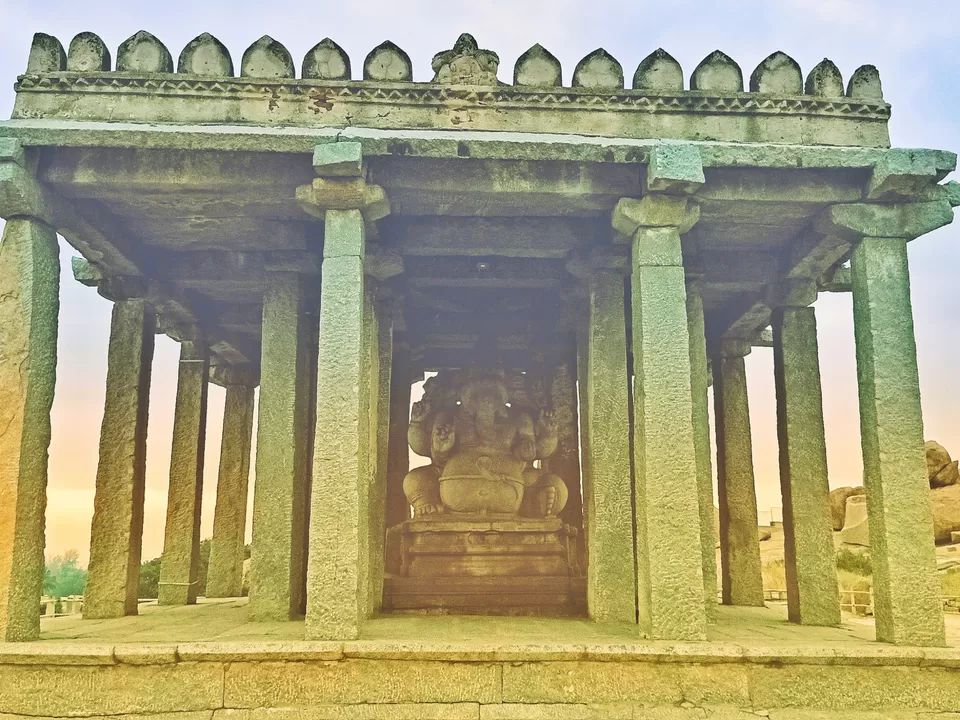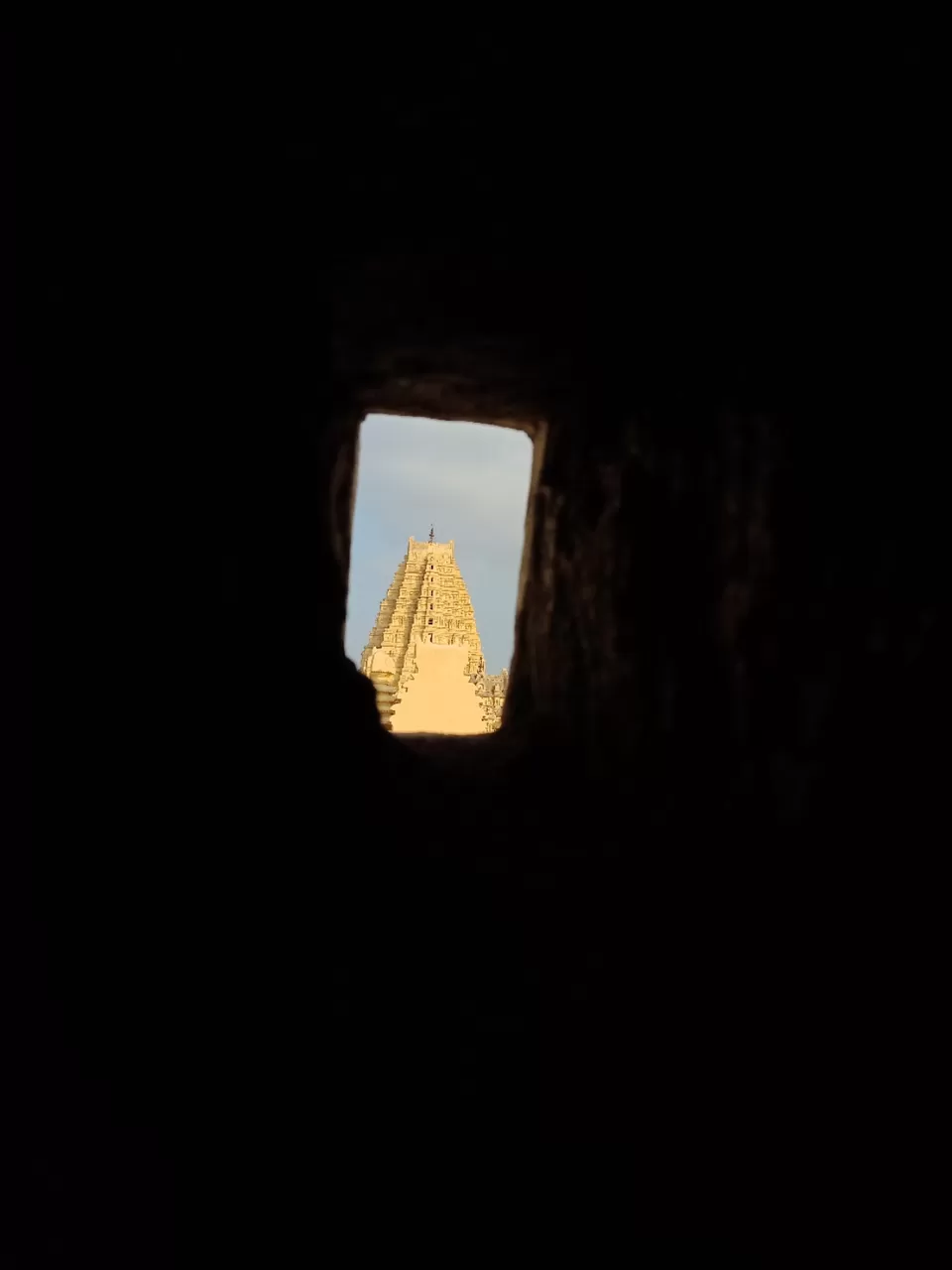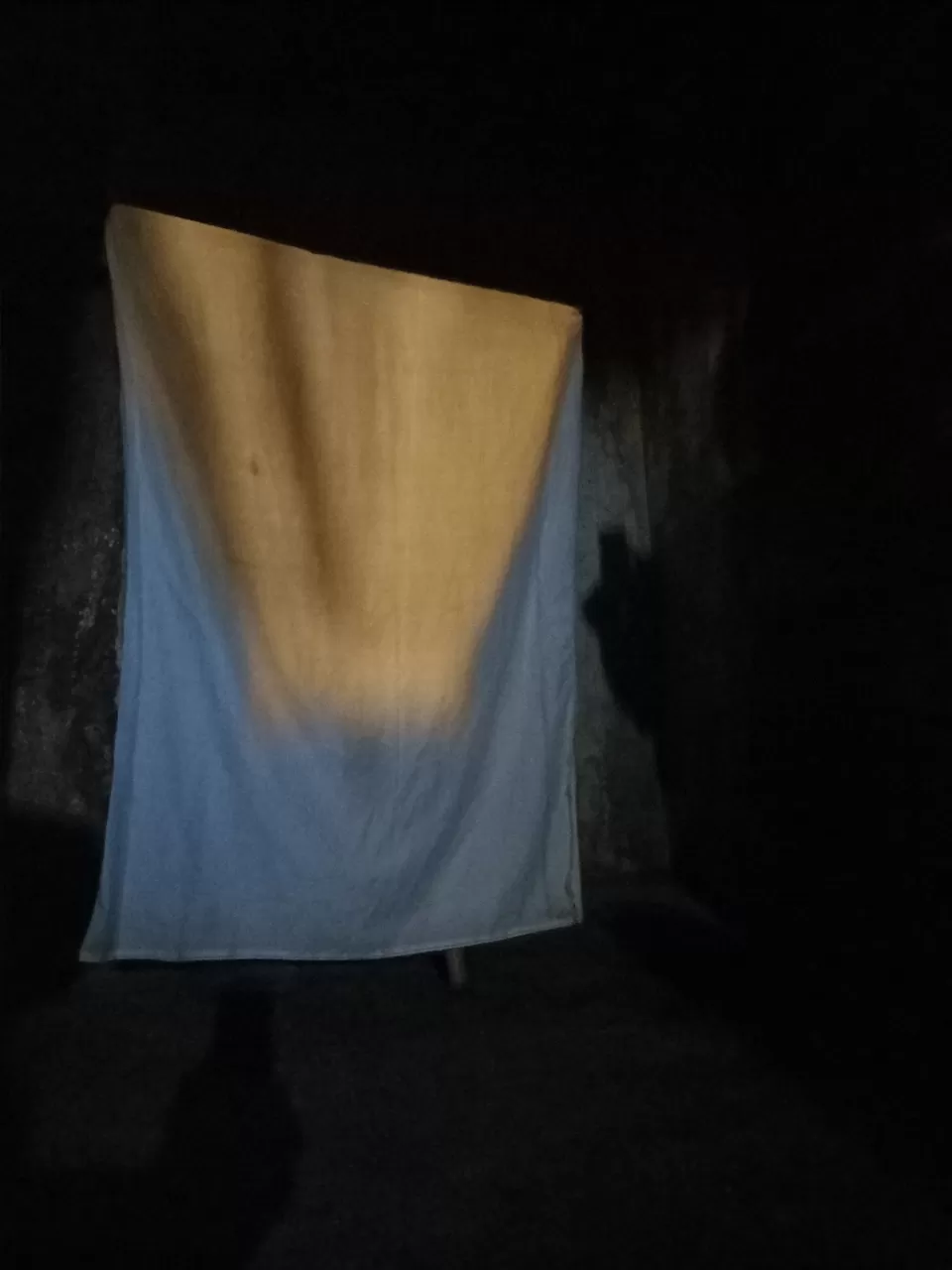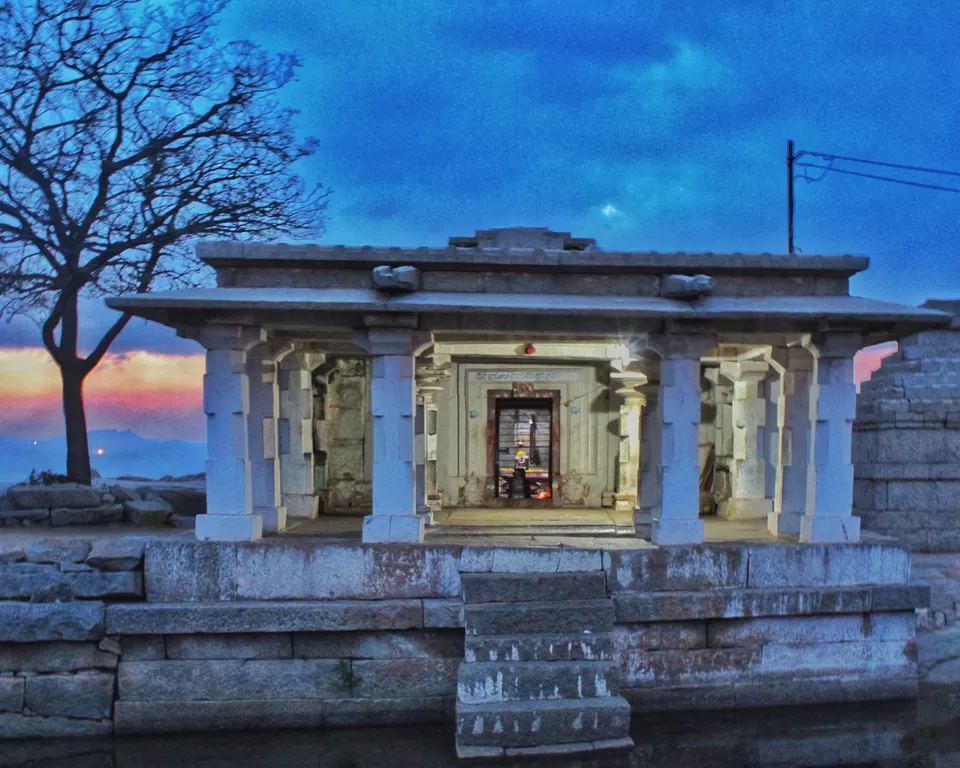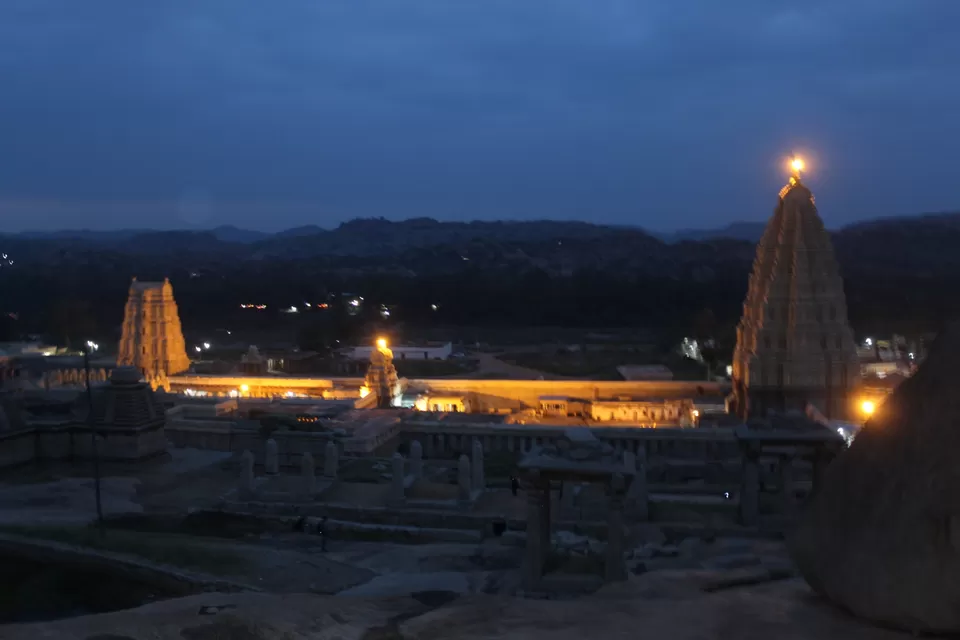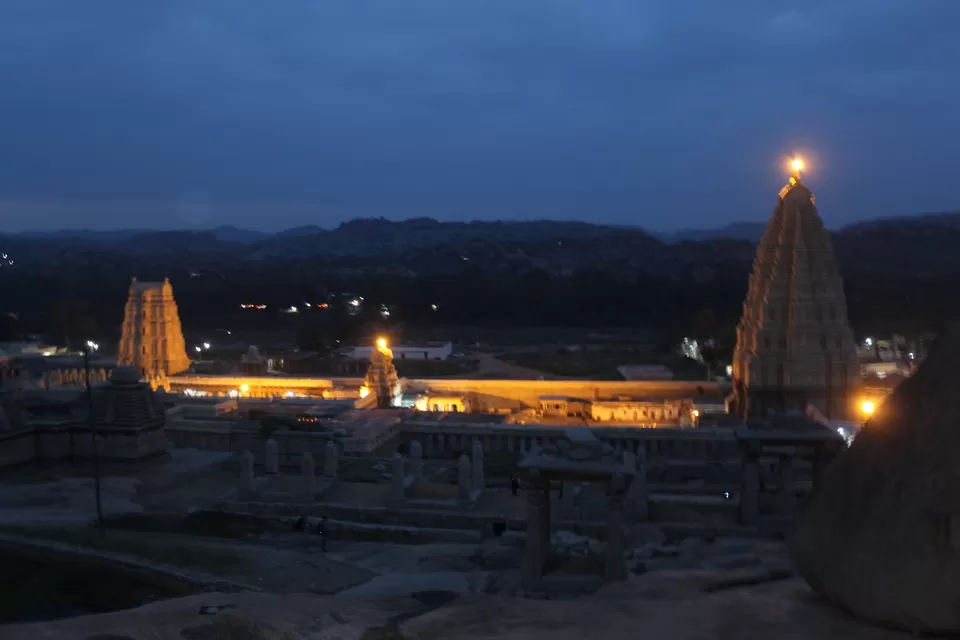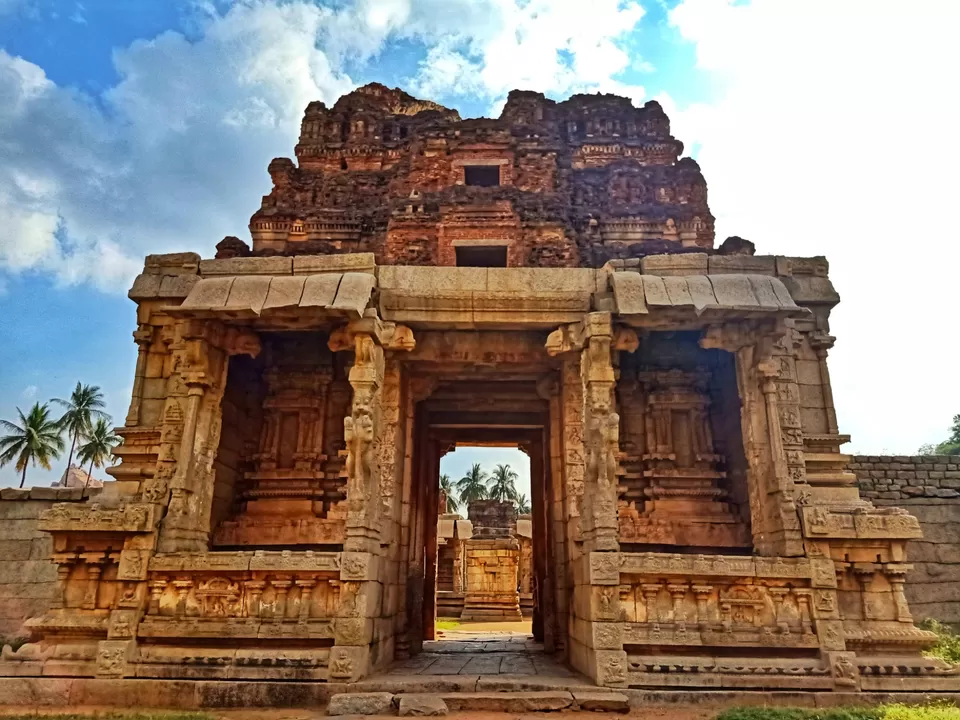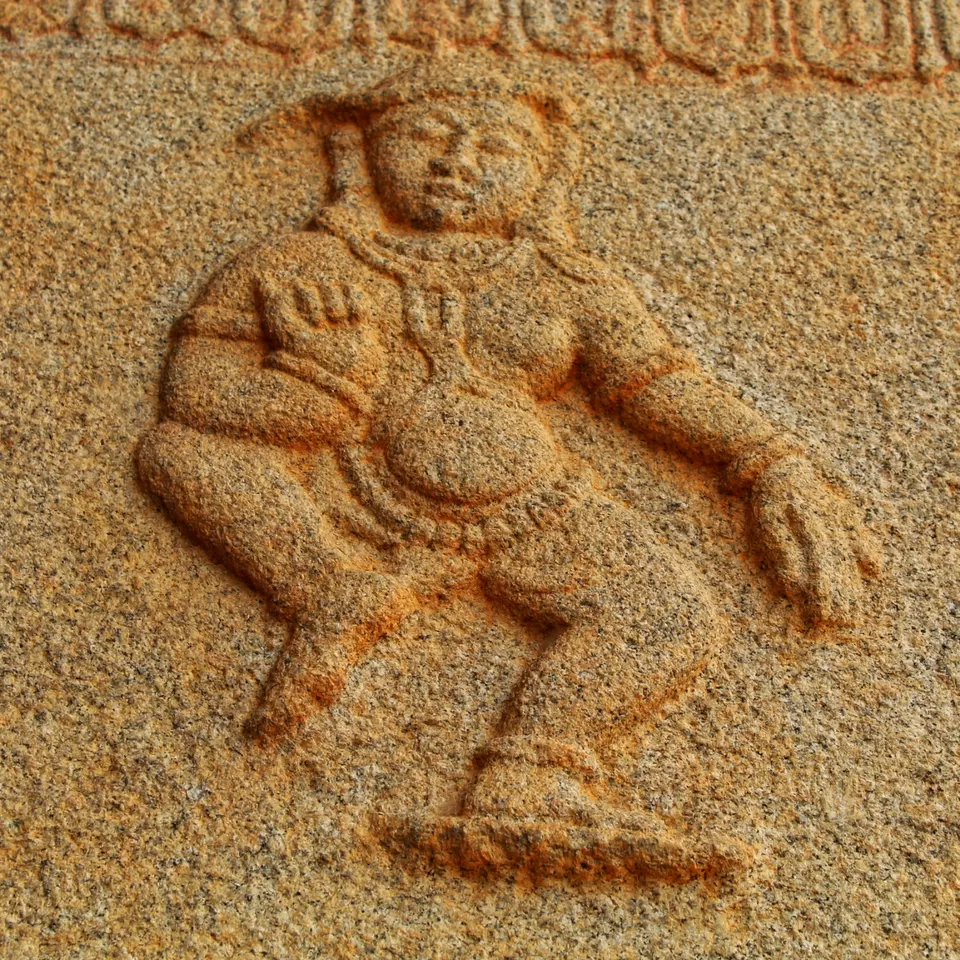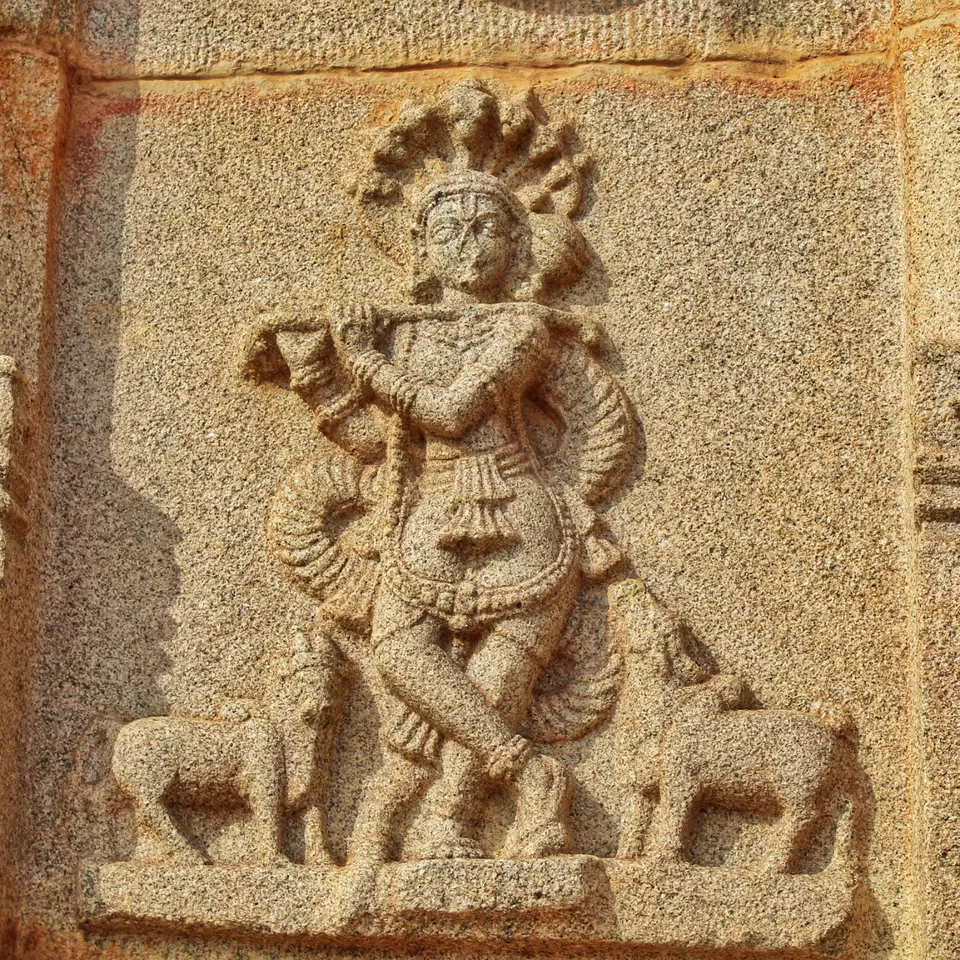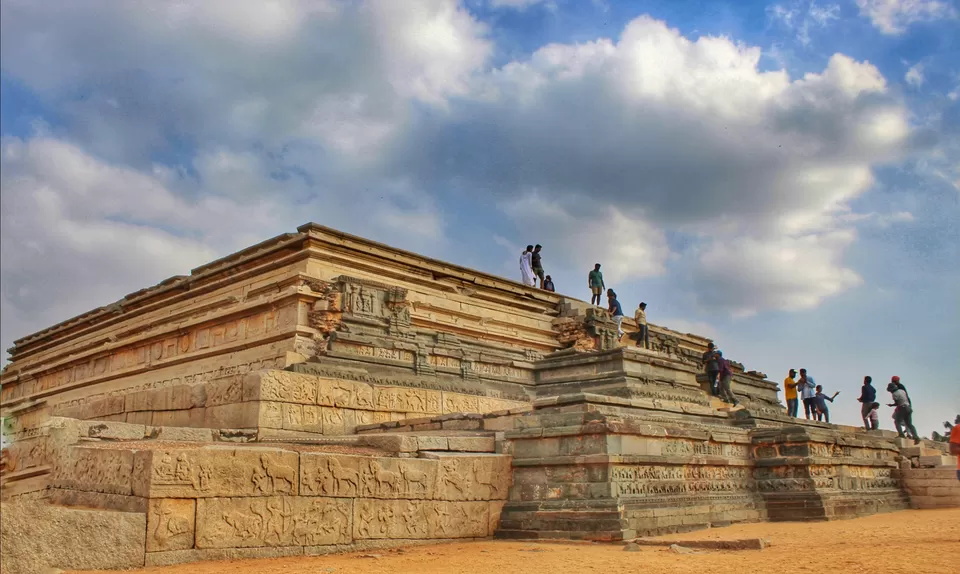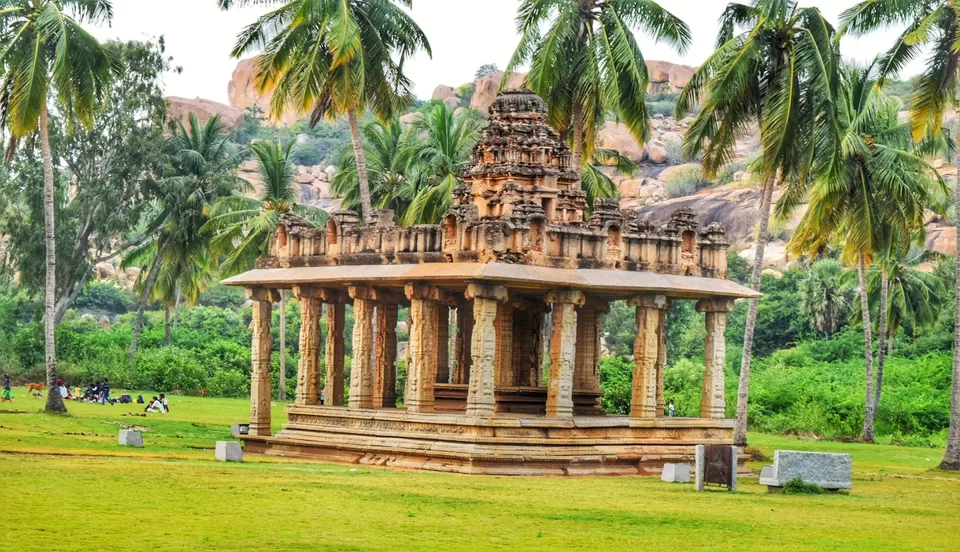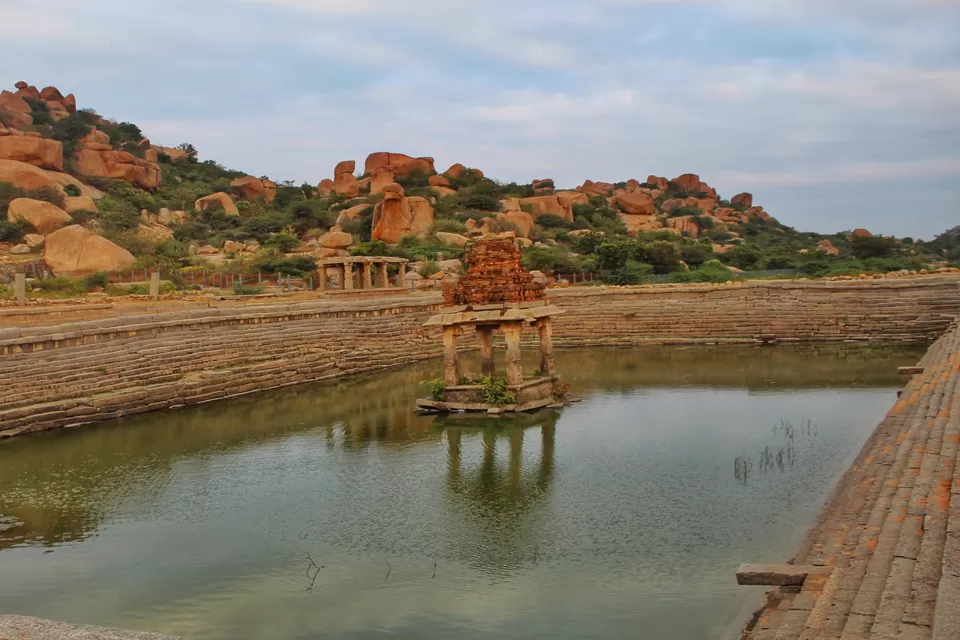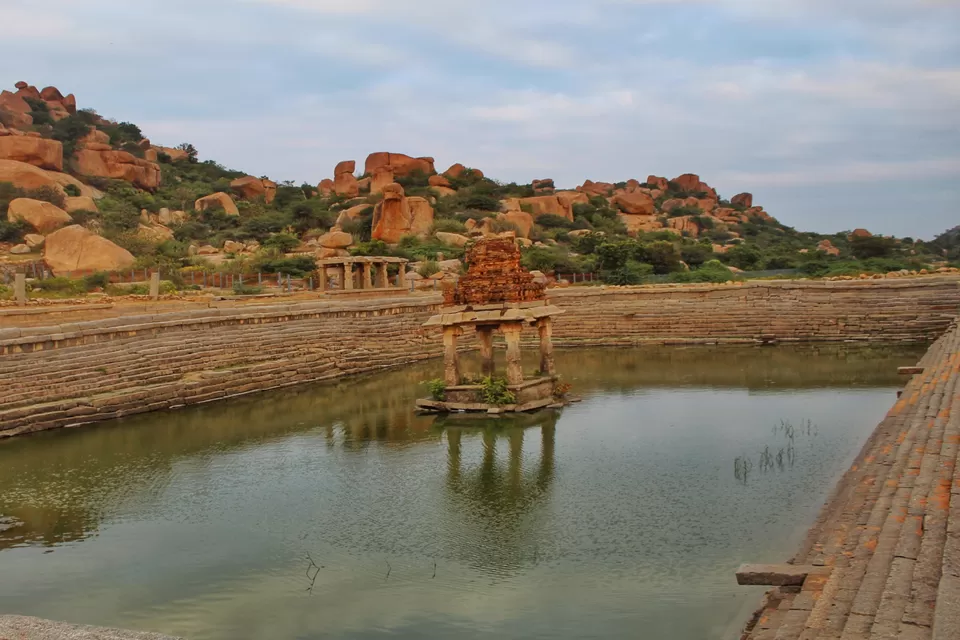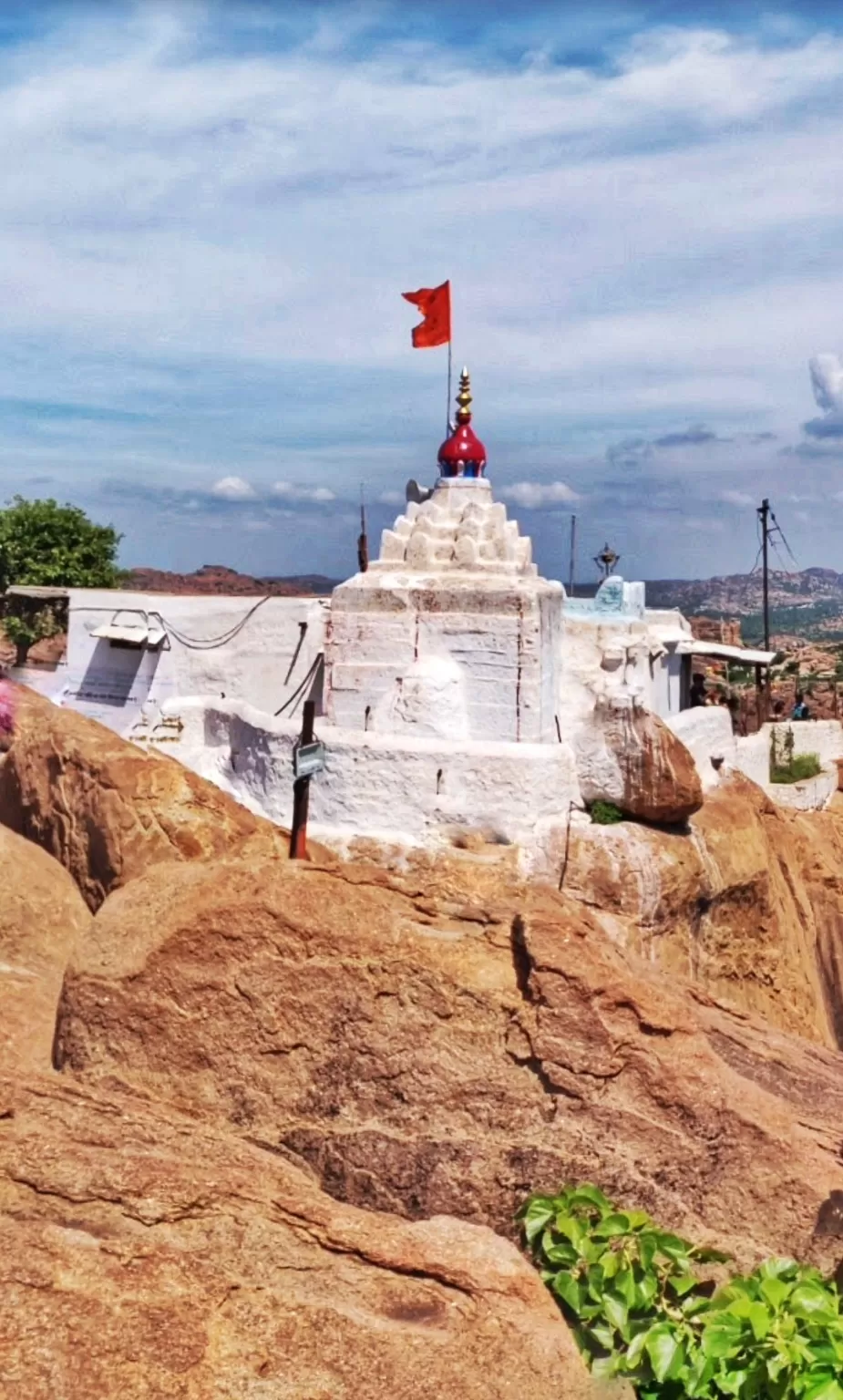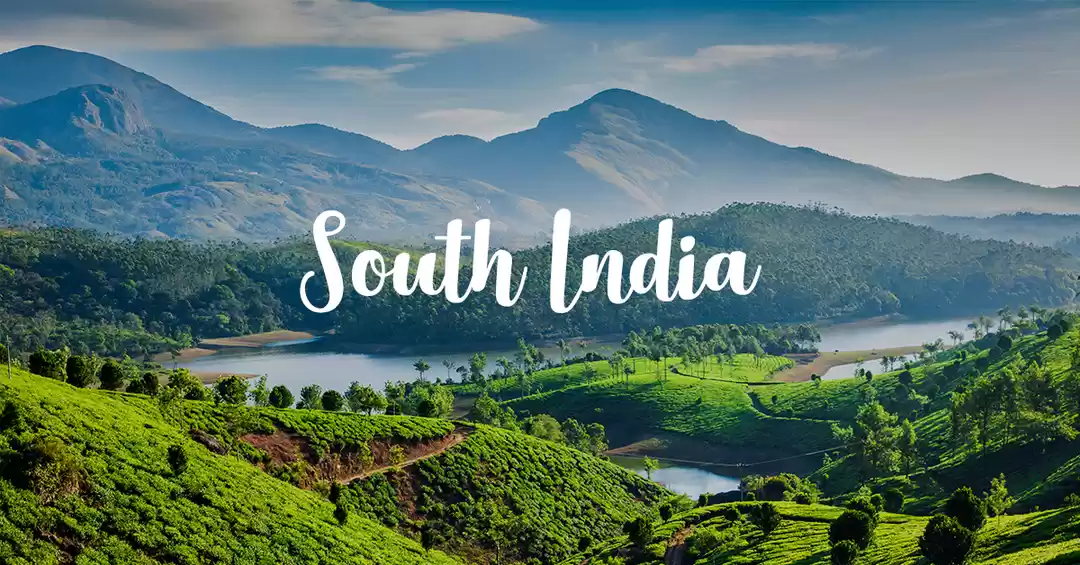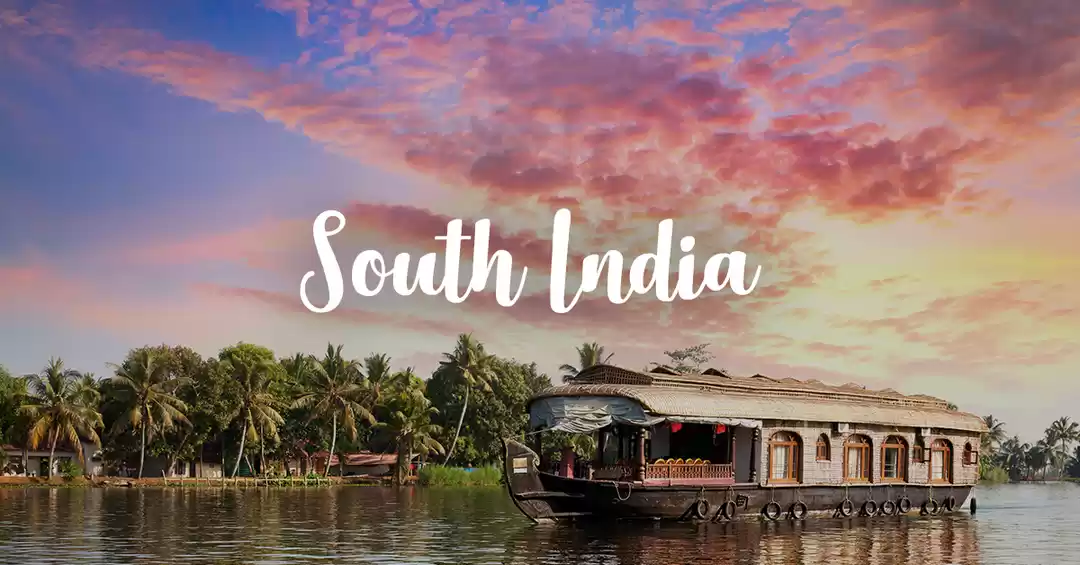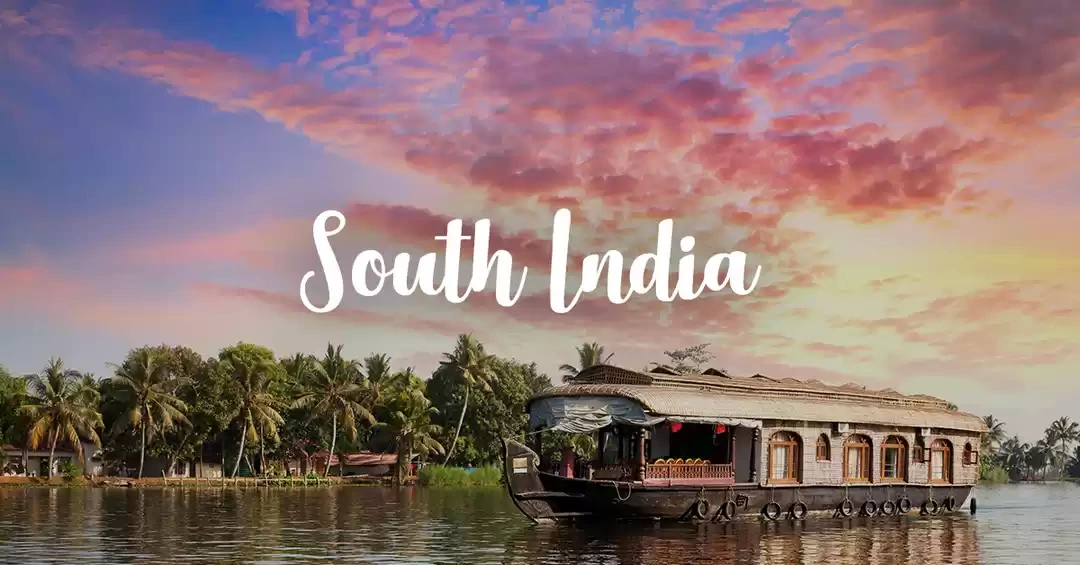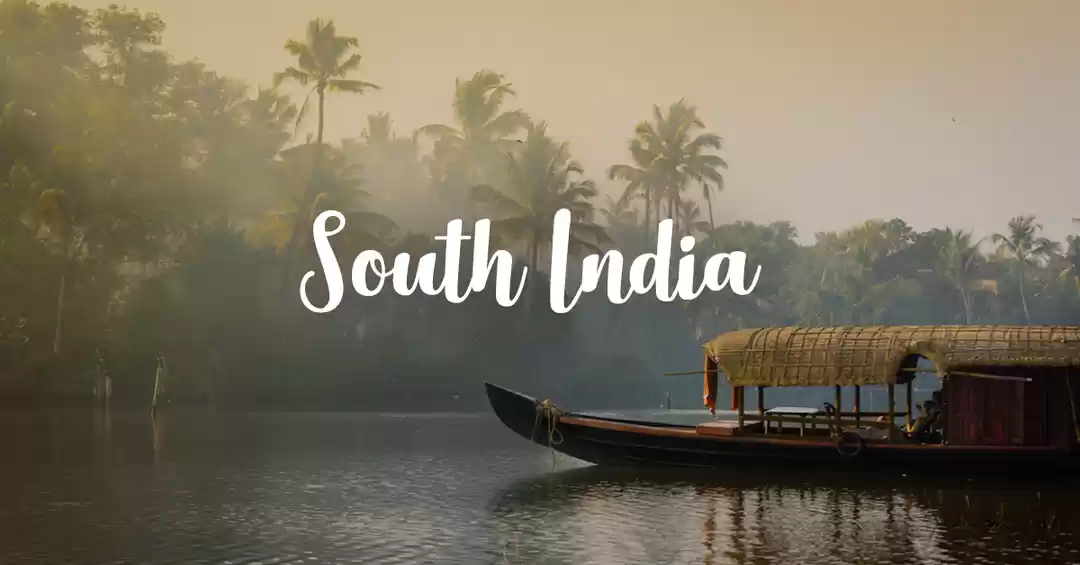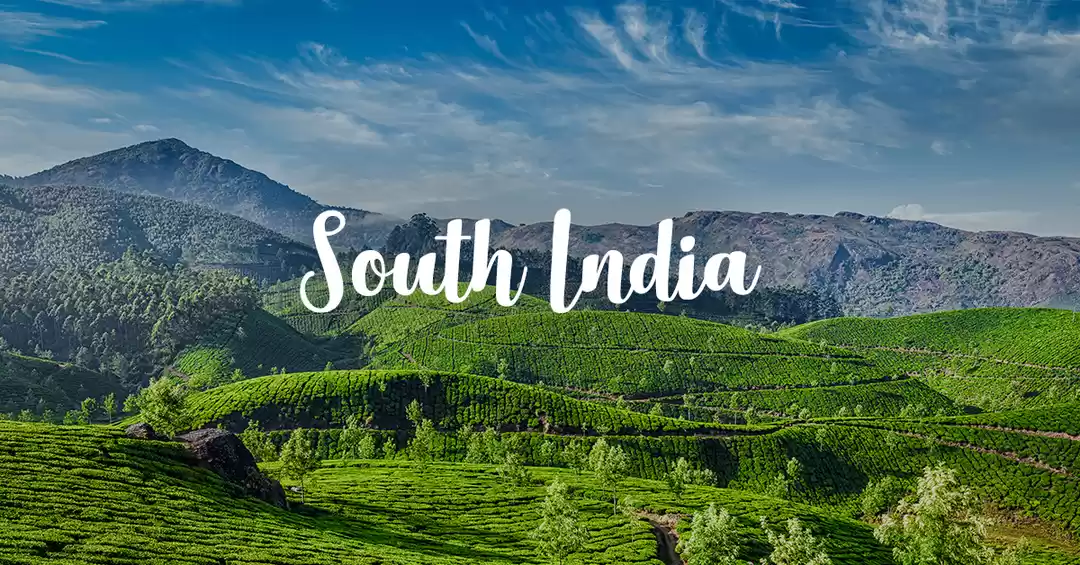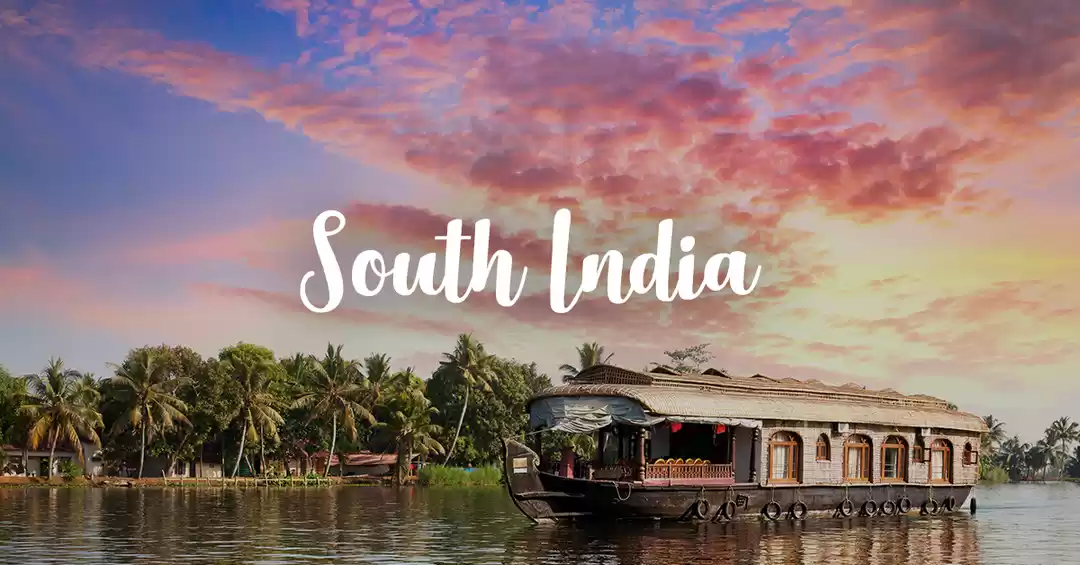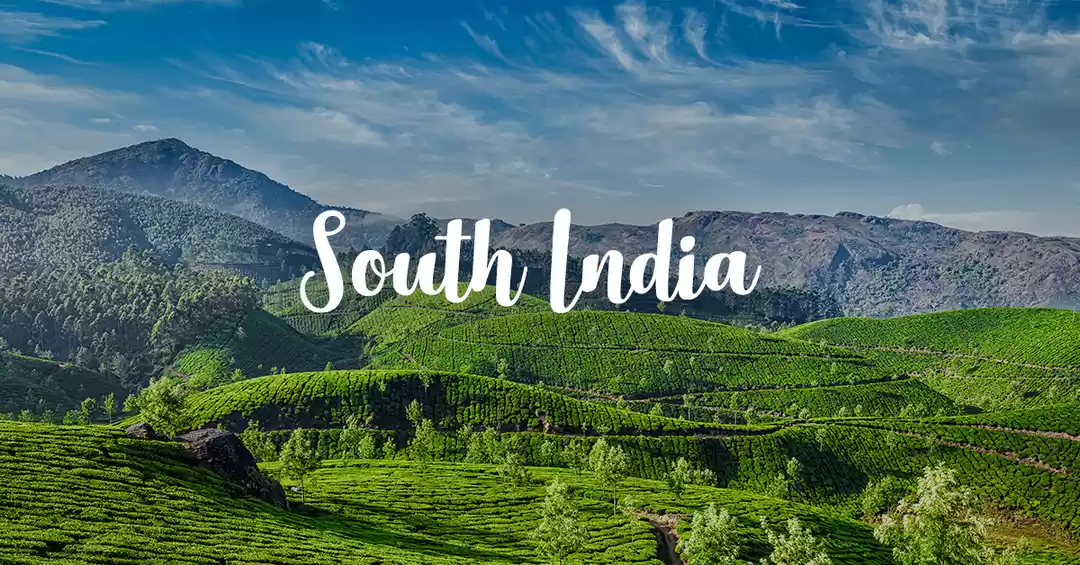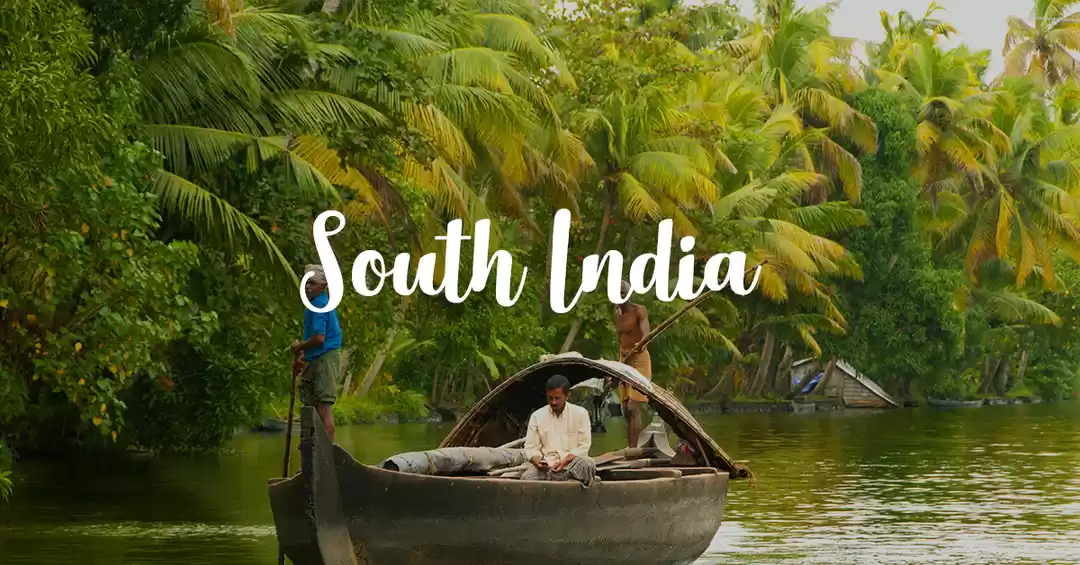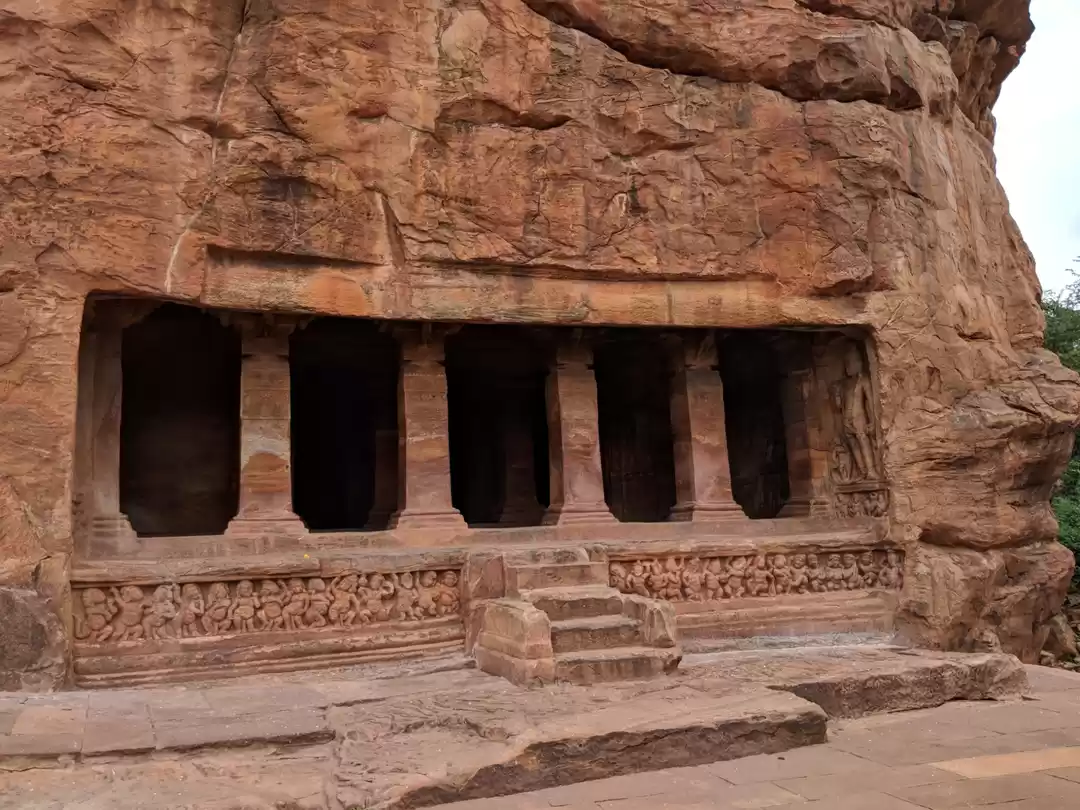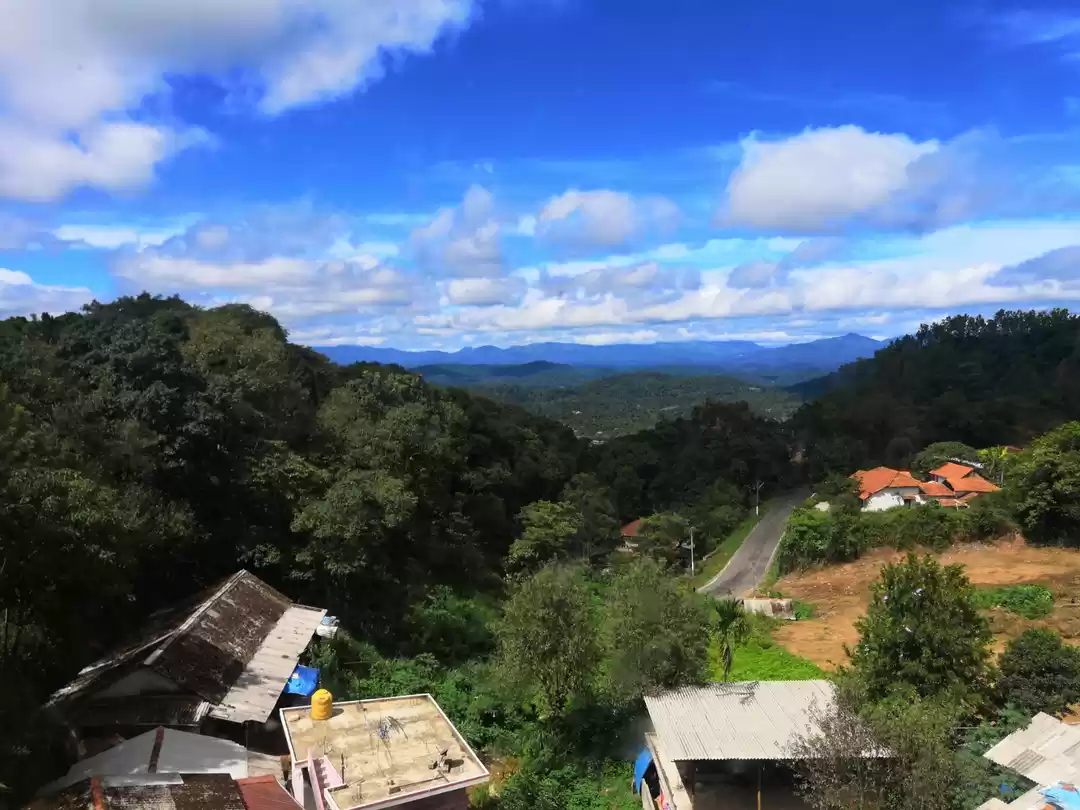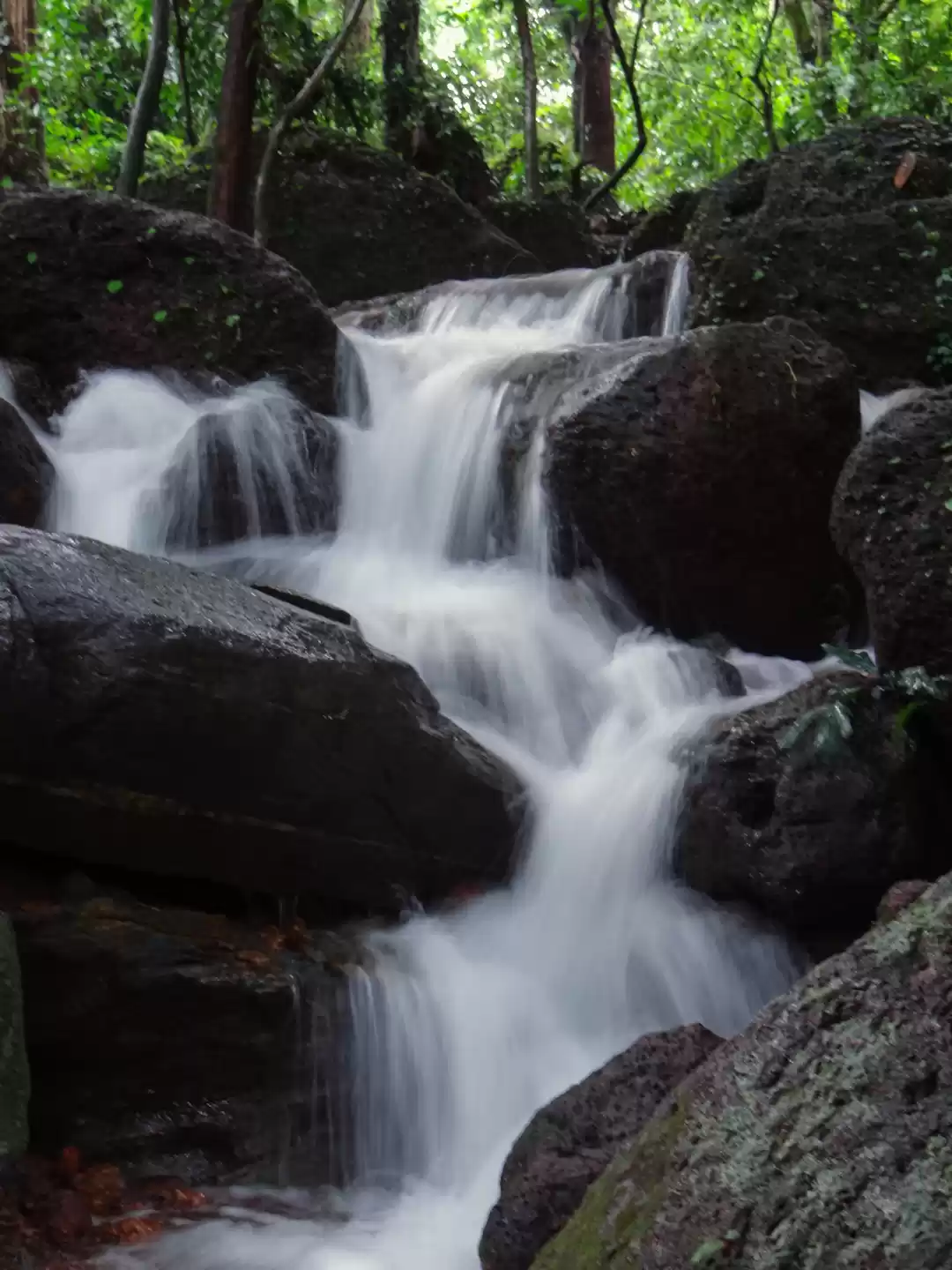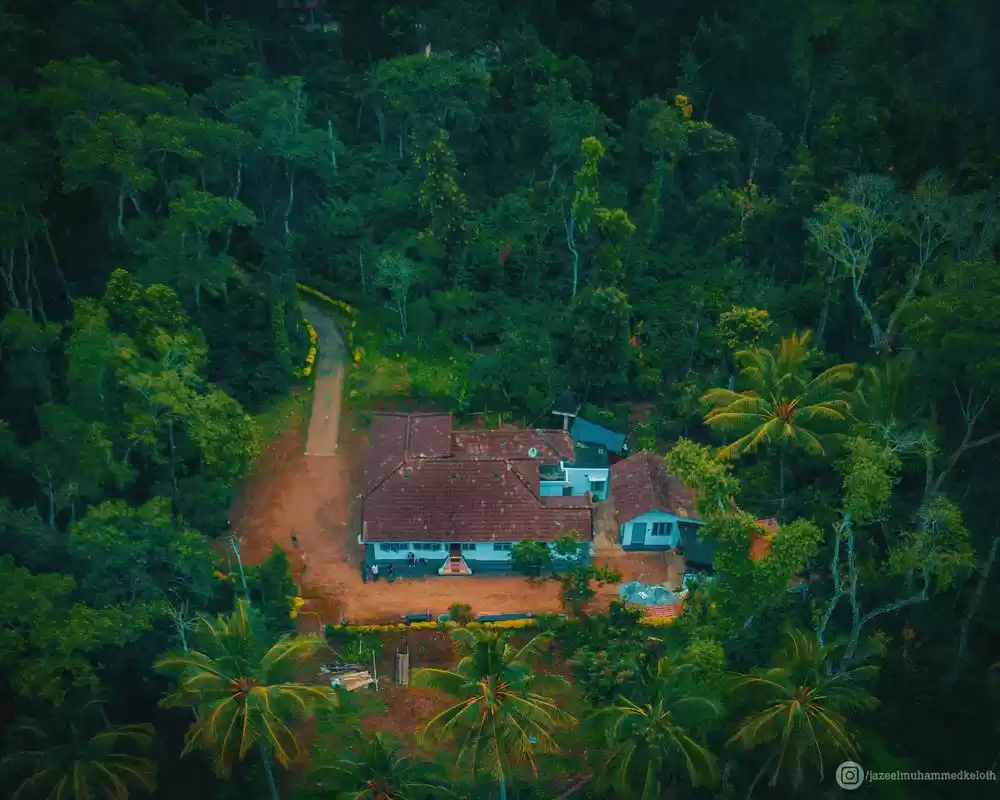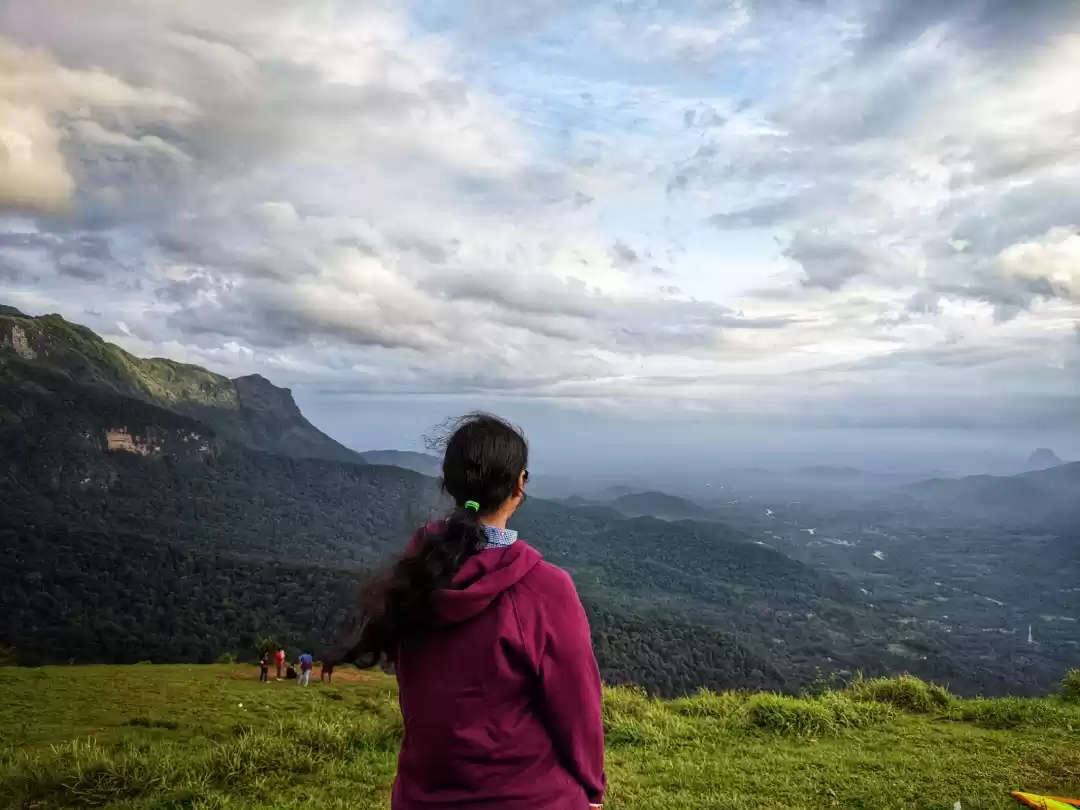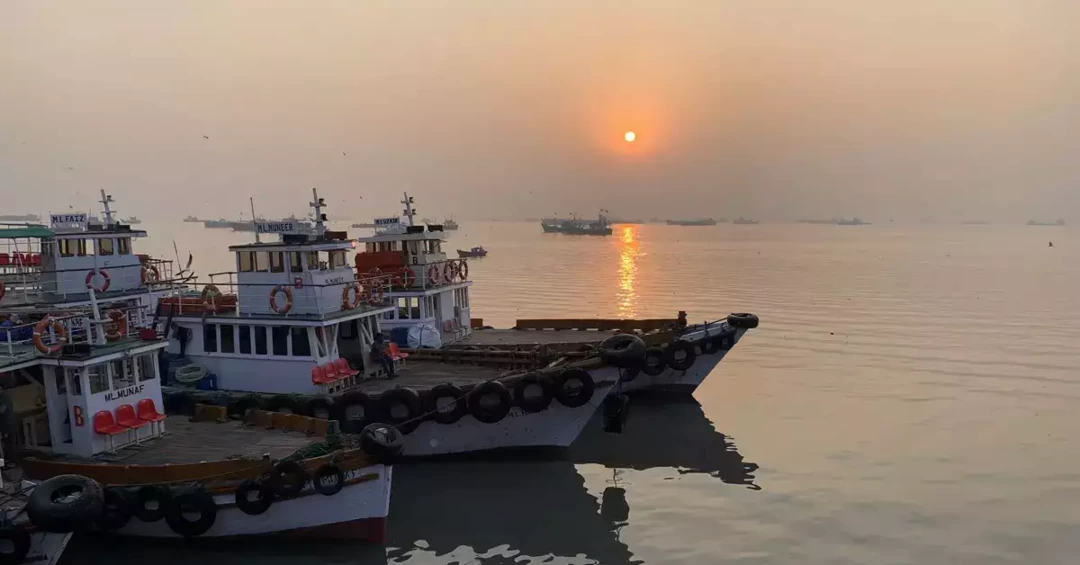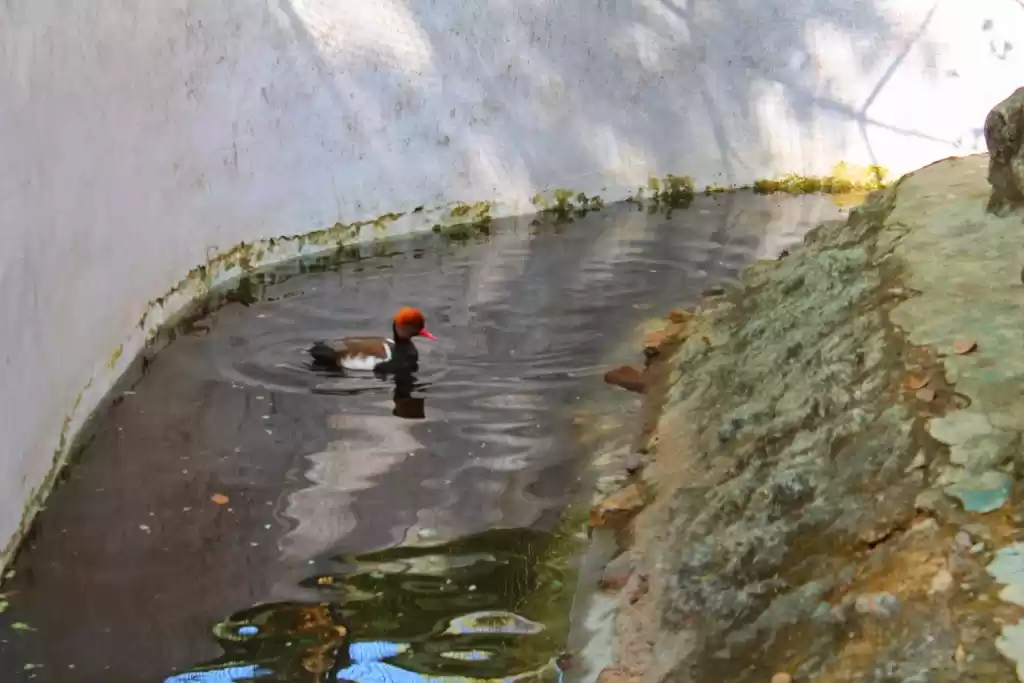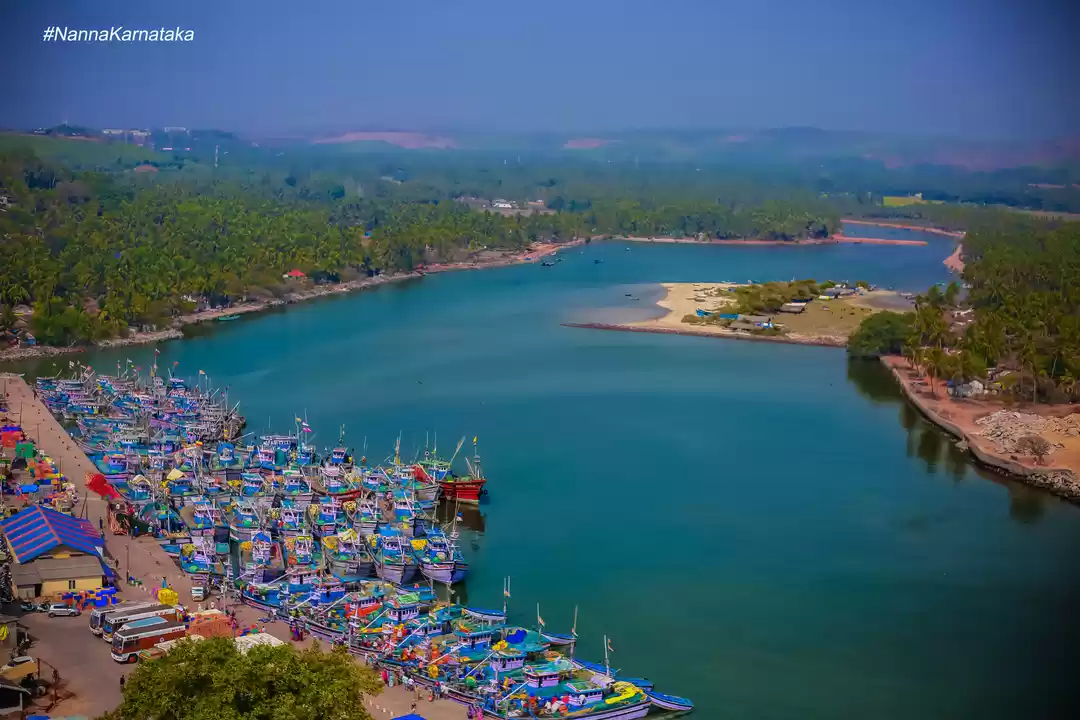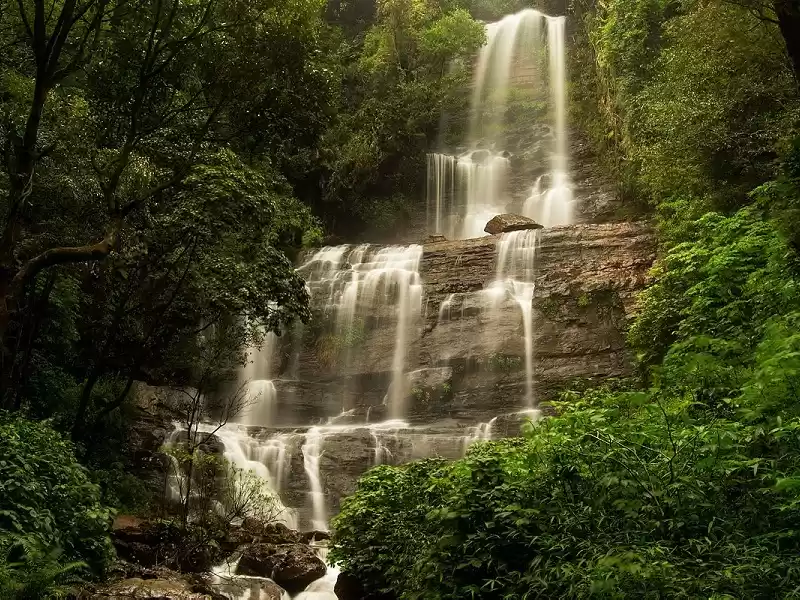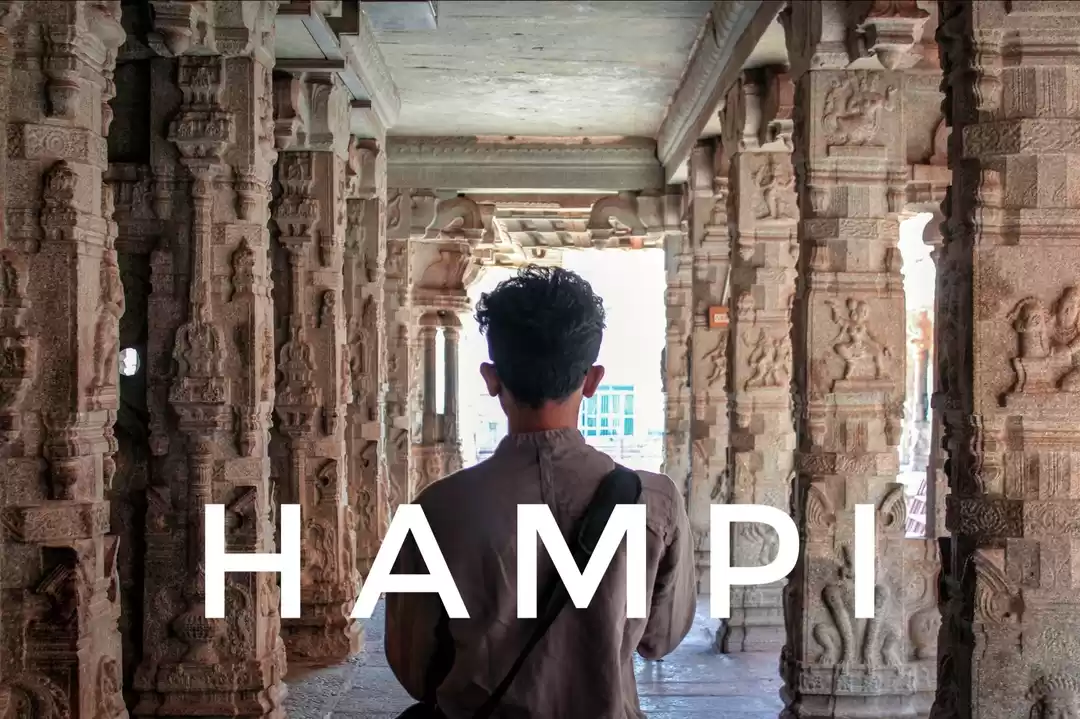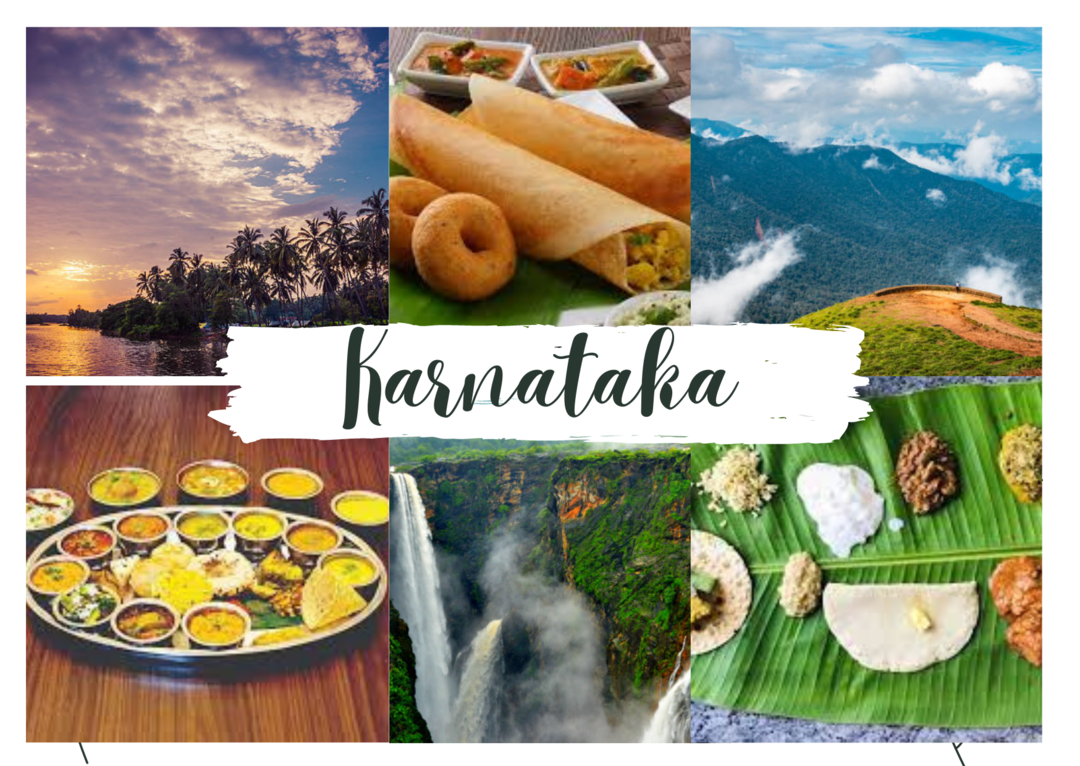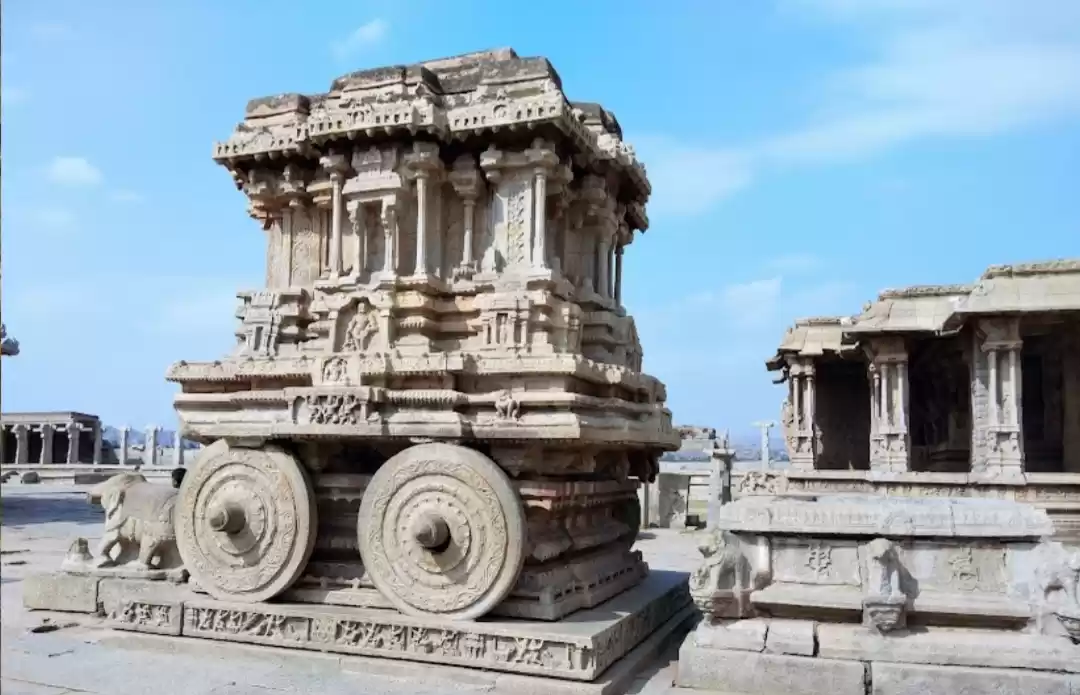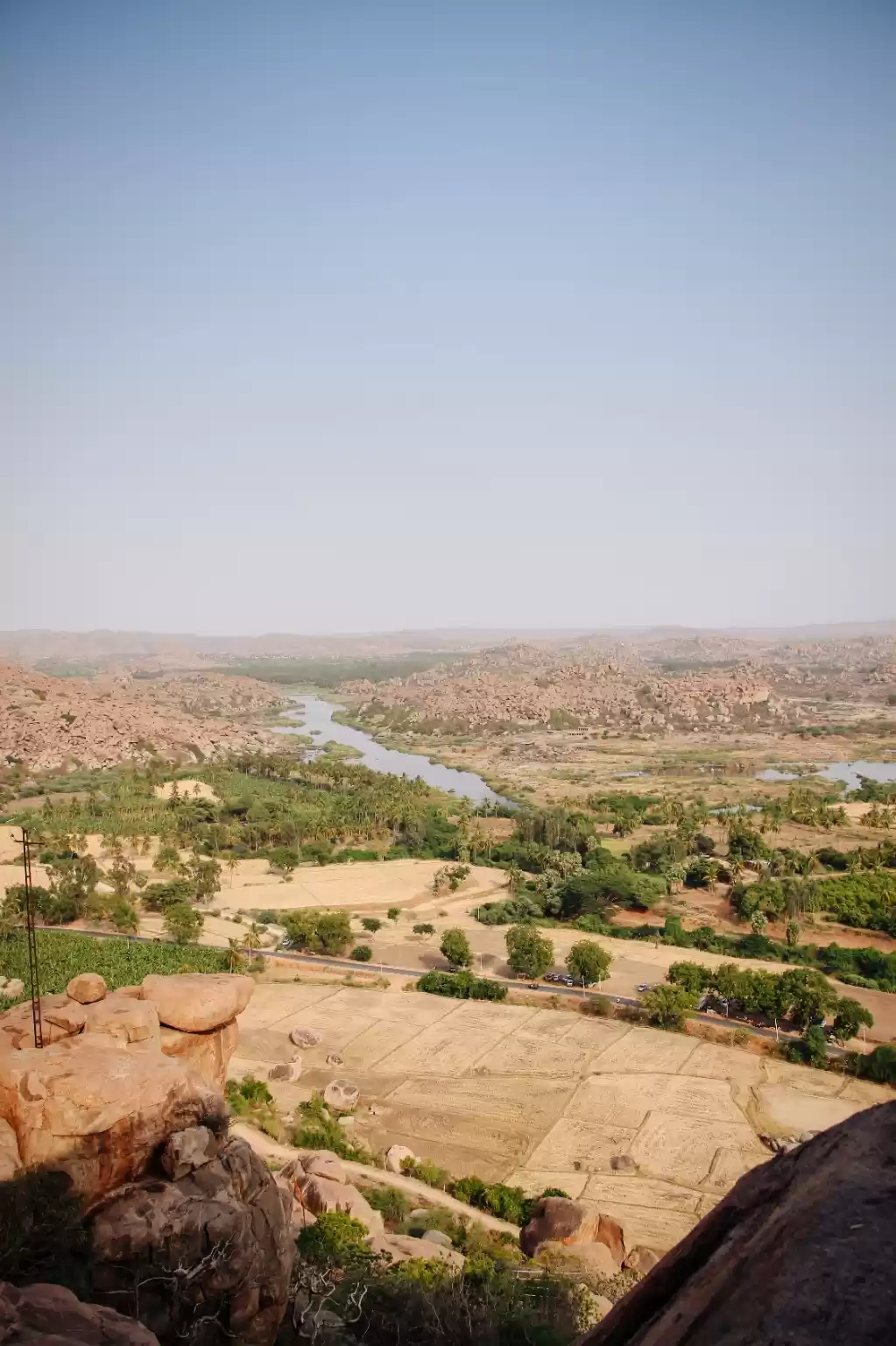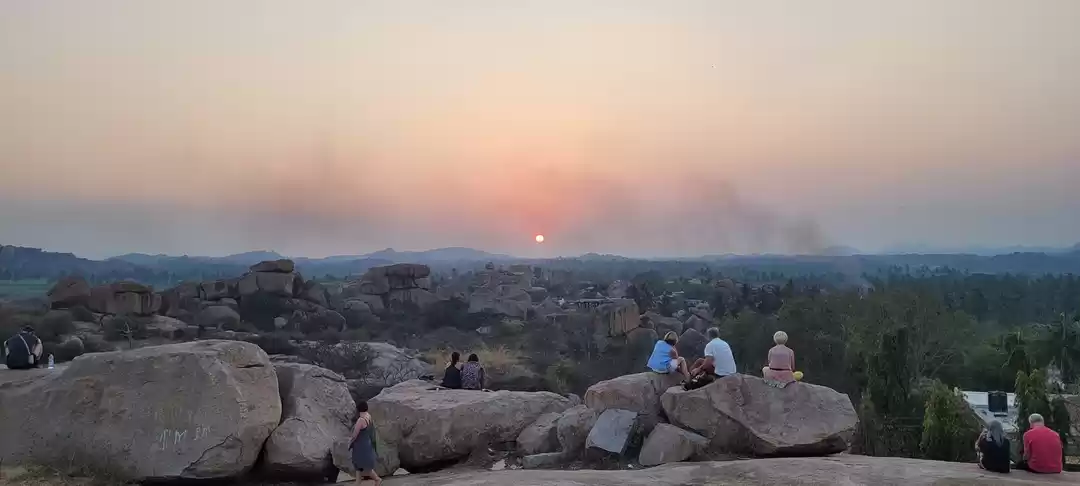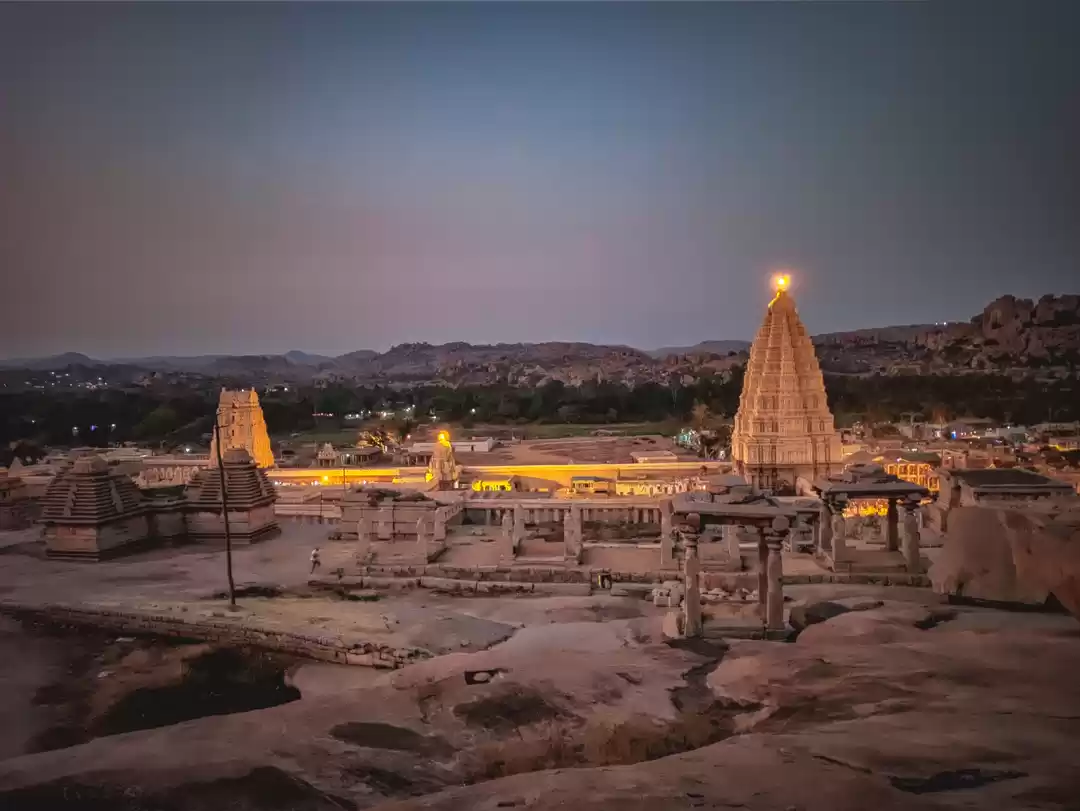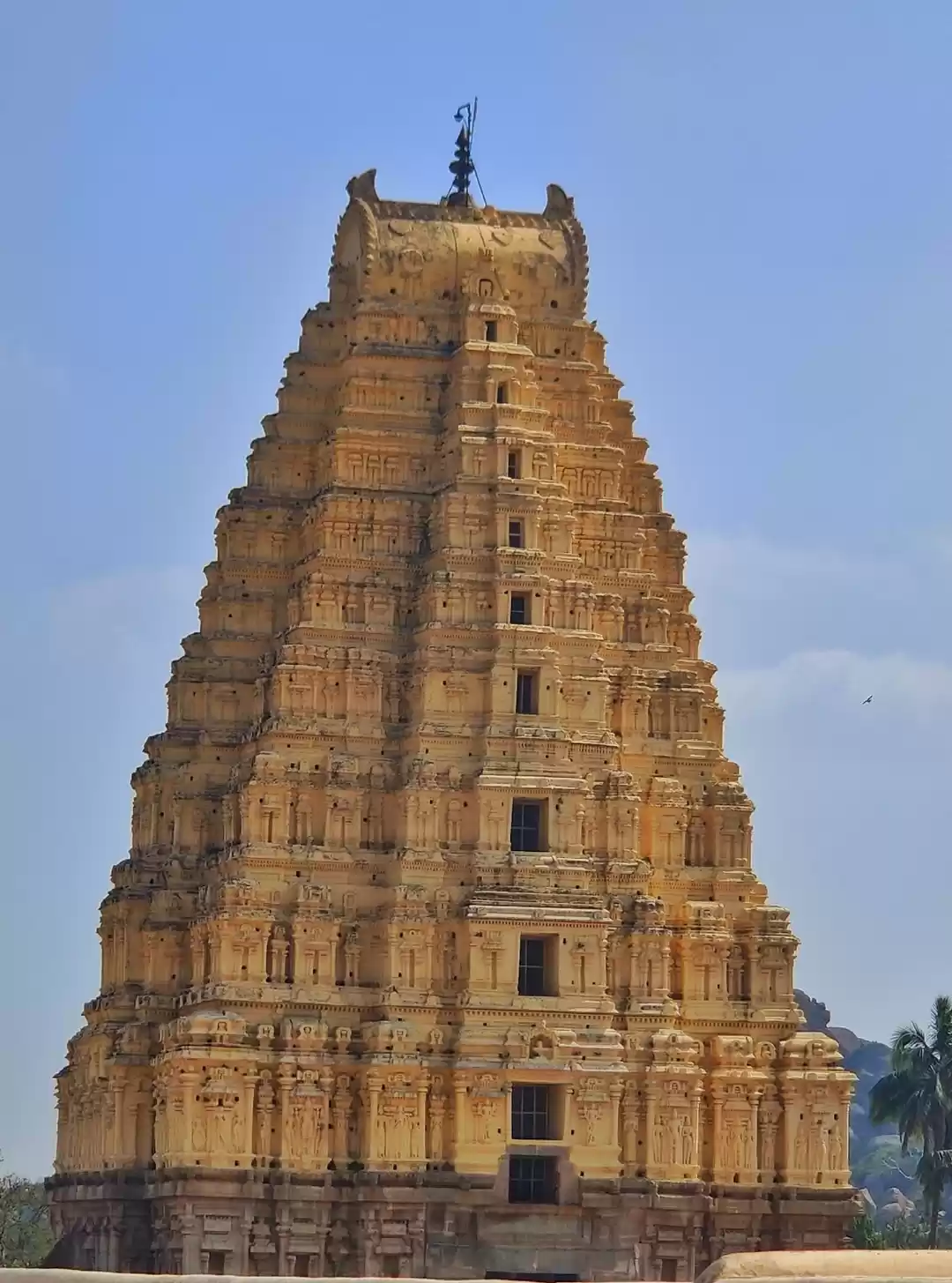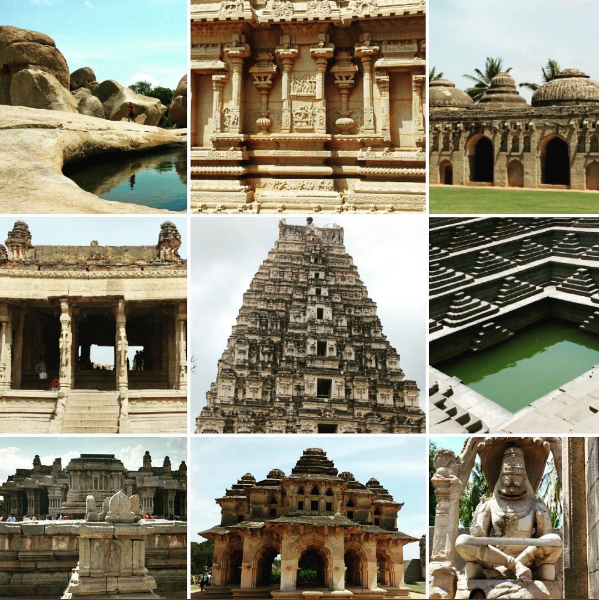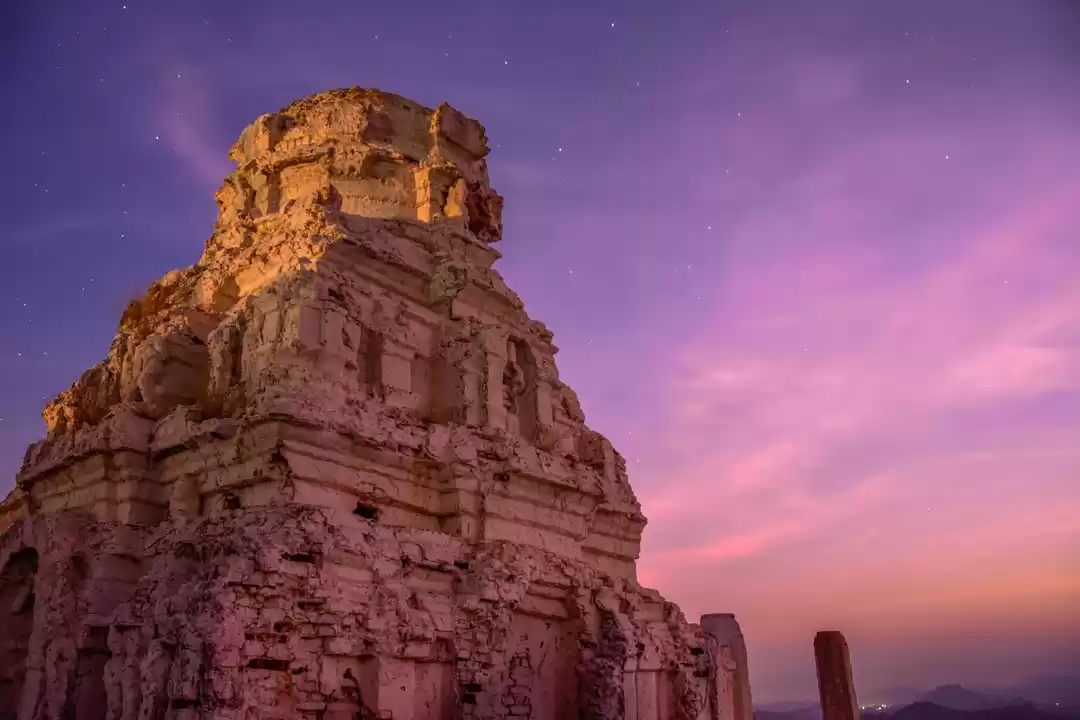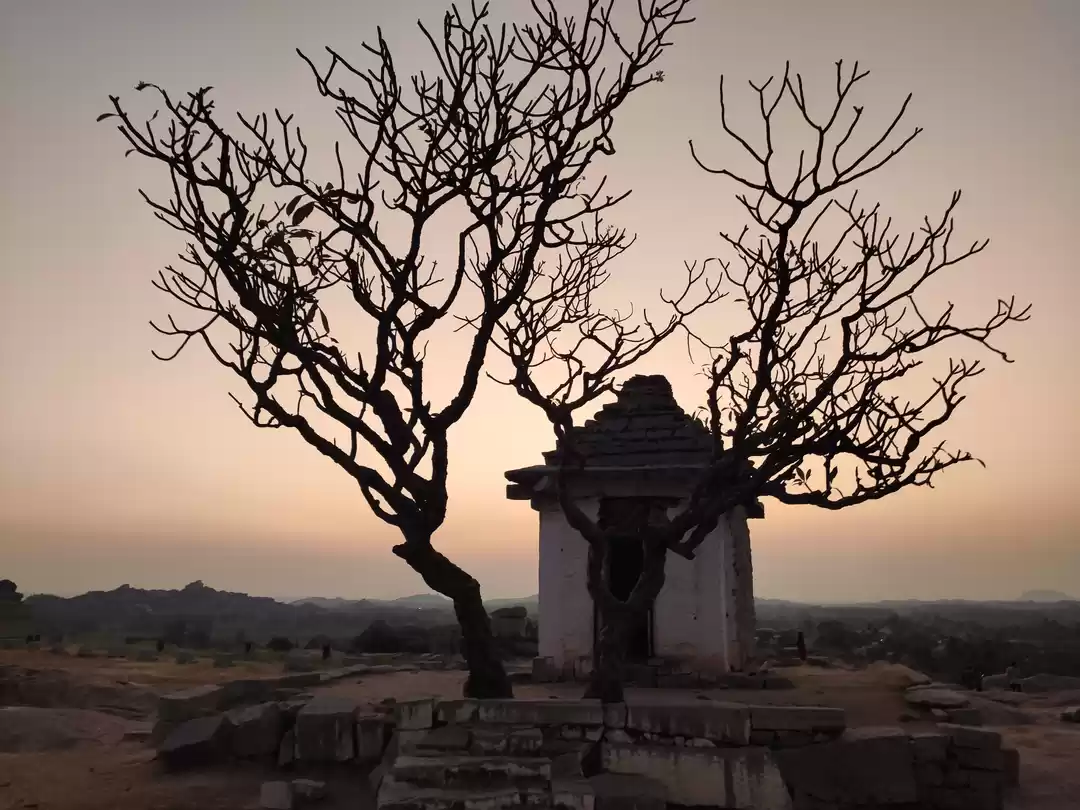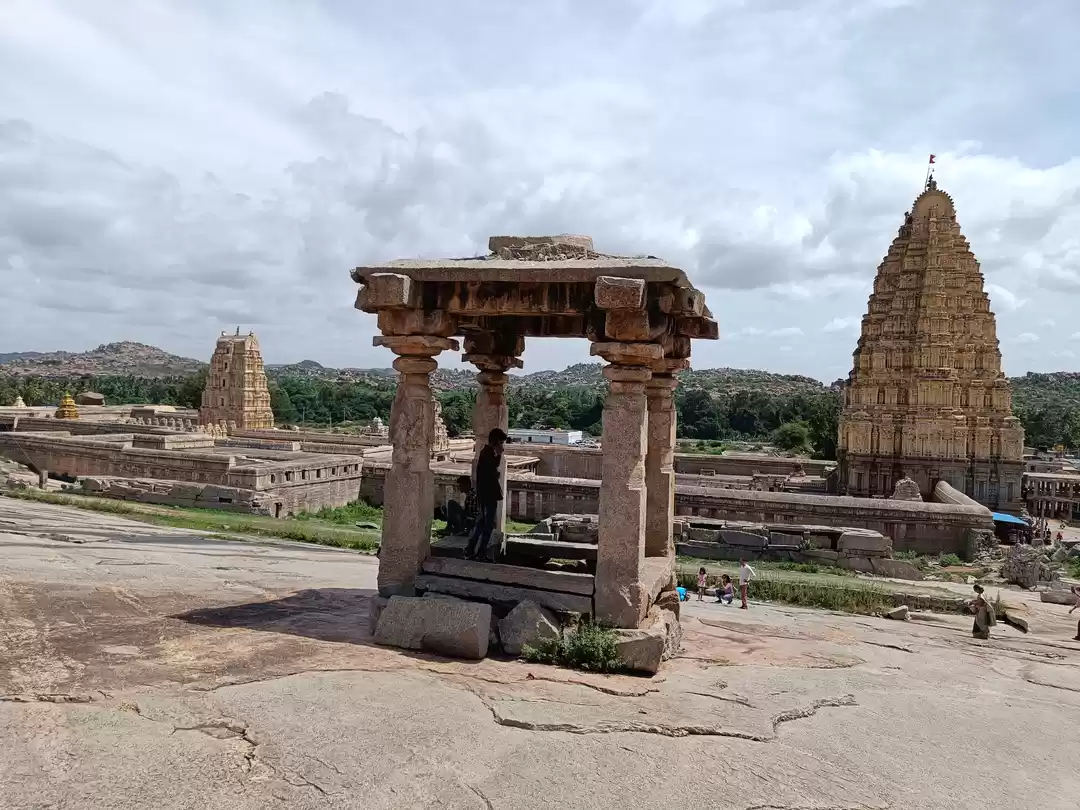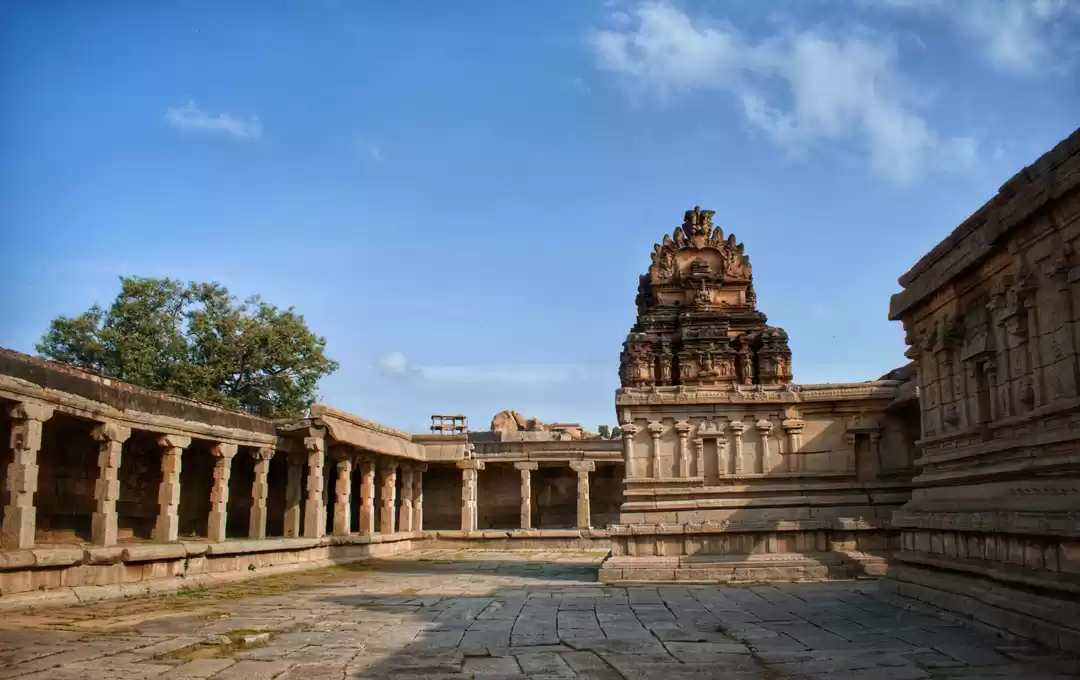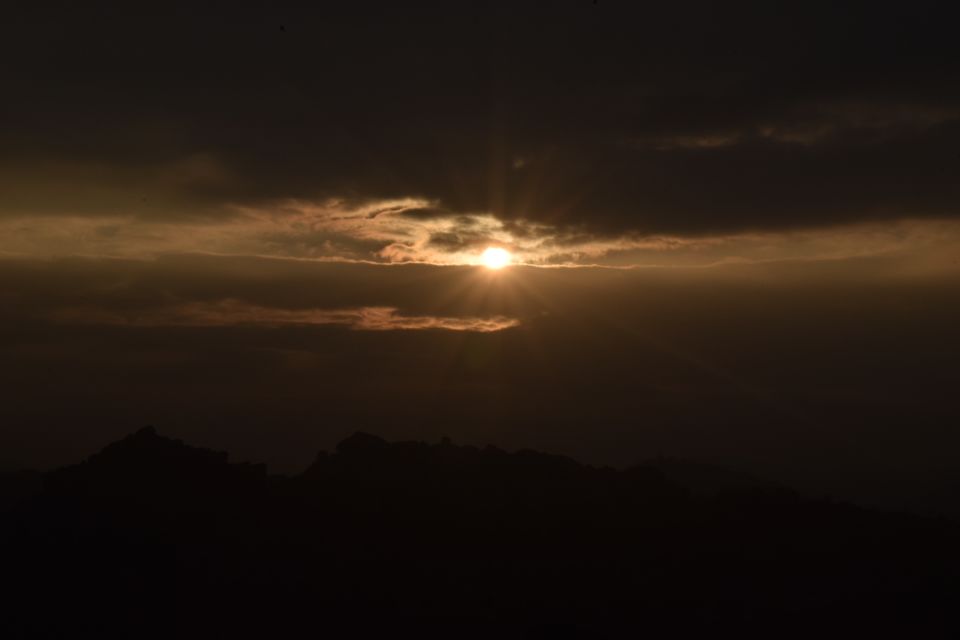
By bus we started our journey to hospet at 8pm from koyambedu,Chennai.
#PSR travels
Hospet to hampi is about 13km
Transport tips_
By Air-
Hubli Airport and Belgaum Airport are two major domestic airports located at the distances of 144 km and 215 km from Hampi, respectively. Bangalore Airport is the nearest international airport which is
about 350 km from Hampi.
By Road-
Hampi is among beloved weekend getaways from Bangalore and is well connected to Hospet, Hassan, Mysore and other nearby cities by road as buses regularly. Tourists traveling to Hampi by road can also avail taxis that are available from nearby towns and cities.
By Train-
Hospet Junction- the nearest railway station to Hampi, is about 13 km away
Morning at 11 we reached to our stay near virupaksha temple.
After fresh up and breakfast we hired auto to roam HAMPI.
1.Lakshmi Narashima Temple..
Within the ruins of Hampi, the Lakshmi Narasimha Temple- also known as Statue of Ugra Narasimha- is the largest monolith statue in Hampi. This 6.7-meter high.statue was built in 1528 A.D. which was vandalised in 1565 during a Mughal raid over Vijayanagara Kingdom.
The statue of Lord Narasimha- an incarnation of Lord Vishnu and a half man, half lion- depicts the deity sitting in a cross-legged position in its fierce form.
2.Badavi Linga Temple
This is the largest Linga image in Hampi. Located next to the Lakshmi narashima statue the Linga is housed inside a chamber with an opening in the front. A close look on this icon can reveal three eyes (depicting the three eyes of Shiva) carved on it. Legend has it that this was commissioned by a peasant woman and hence the name (Badva means poor in local tongue).
The sanctum in which the Linga is installed is always filled with water as a water channel is made to flow through it.
According to Hindu mythology the River Ganga (Ganges) was brought from heaven to earth to quench the drought. But the river was so forceful that it could split the earth into two pieces if allowed to fall on earth. Lord Shiva consented to take the impact by allowing the torrent of Ganga to fall on his matted hair. Thus helping to release a smooth flowing river on to earth from his hair. As an iconic representation of this, in Siva temples you can spot a dripping pot hanged over the Linga.
Both Lakshmi Narasimha & Badavi Linga shrines can be visited together.
3.Underground Shiva temple
(Also known as Prasanna Virupaksha Temple) is one of the oldest in HAMPI Temples dating back to 14th Century. This temple is unique as it is located a few meters below the ground level and roof of the temple is at current ground level. Another uniqueness comes from the factor that sanctum of the temple remains submerged in water through out the year and one has to walk almost 20 meters through 2 feet water to reach to the room with Lord Shiva statue.
4.Mint Area
After experiencing the subterranean shallows of the underground Shiva temple, we were taken to a relatively recently excavated complex of royal palaces known as the Mint that were the home of Viraharihara (1377 – 1404 AD), the third ruler of the Vijayanagara dynasty.
Little remains of the complex now, except a few ruins and rebuilt walls. But according to archaeologists it once featured the royal court, the residential quarters of the king and royal women, the royal kitchens, and even an elephant alighting platform – all serviced by a well-designed drainage and water supply system.
At the height of the Vijayanagara dynasty, the palace complex must have made for an extremely impressive sight. Even in its ruined state of today, the sheer size of the complex gives you an idea of the wealth and the grandeur that the royal household must have lived in.
5.Lotus Mahal
Kamal Mahal is also known as Lotus Mahal
and is known for its beautiful architecture.
The palace has been named after its lotus
shaped structure. The central dome is like
the bud of lotus, whereas the balcony and
passages depict the petal. The palace is
surrounded by 24 pillars to provide support
to this lotus-shaped palace.
6.Elephant Stables.
One of the most interesting places to
explore in Hampi are the Elephant Stables.
These are the enormous homes of the
royal elephants. The elephant stables
comprises 11 chambers and its enormous
structure is a true surprise for visitors.
7. Stepped Tank
Once considered to be sacred tank,
Stepped Tank in Hampi is another amazing
place to explore in Hampi. Earlier, the place
was a hub of pilgrims who used to take
sacred baths here before visiting the
prominent temples of the area. However,
with the passage of time, the place turn
as an eminent tourist spot.
8.Queens bath
Queen’s bath is yet another famous heritage site in Hampi. The private bathing chamber of the kings and the queen is rectangular in shape and is surrounded by ornate balconies, each having a set of three windows. The depth of the pool is six feet and has no ceiling but has stone steps leading to the bottom of the tank. The 30 sq m structure is surrounded by a moat on all sides probably intended to prevent people from entering the area when the royals were busy bathing.
9.Vijaya Vittala Temple
Vijaya Vittala Temple is a 15th-century structure that is also considered as the largest of all historical structures in Hampi. This humungous temple is dedicated to Lord Vittala- an incarnation of Lord Vishnu and is a must-visit amongst all Hampi tourist places.The extraordinary stone chariot, arrays of huge pillars in the temple halls and intricate sculptures are the true embodiments of bewitching architecture of centuries old Vijaya Vittala Temple.
*Stone Chariot..
The chariot is actually a shrine dedicated to Garuda, built inside the Vittala Temple Complex. The massive sculpture of Garuda, Lord Vishnu’s escort once was seated atop the chariot but it is empty at the present date. The Hampi Chariot has earned its name among the other three famous stone chariots in India- One in Konark, Odissa, and the other in Mahabalipuram.
*Musical Pillars
The large Ranga Mantapa is well known for its 56 musical pillars. These pillars are also known as SaReGaMa pillars, which are attributed to the musical notes emerging out of them. The musical notes can be heard when the pillars are gently tapped. One can find a set of main pillars and also several smaller ones at the mantapa.
Each pillar provides support to the ceiling of the mantapa, and the main pillars are designed in the manner of musical instruments. Every main pillar is wrapped by 7 minor pillars and these minor pillars emit different musical notes. Every note coming out of these pillars vary in their sound quality and also change as per the percussion, string or wind instrument being played.
10.Matanga Hill (Sunrise/Sunset Point)
Matanga Hill offers panoramic views of
historical ruins of Hampi and its
surroundings. After trekking up the hill for
around 30 minutes, you will find
Veerabhadra Temple sitting right at the top
of Matanga Hill. This temple has a rooftop,
which is unarguably the best place to
witness sunrise and sunset over the love
landscape of this historical Hampi town.
11.Malyavantha Ragunatha Temple
One of the beautiful temples which is amazing yet not that famous is the Malyavanta Raghunatha Swamy temple at hampi. This temple is at a distance of 3km from the main Hampi bazaar street on the way to Kamalapur. This temple is dedicated to Lord Rama and hence the name Malyavantha Ragunatha temple.
12.Thungabhatra River
Tungabhadra is a very important river in this region and most of the political and cultural history is significant due to this river. At this region the river takes a number of twists and turns due to the rocky terrains. Hampi is located somewhere in a path in the middle of the mighty river. The river along with the large boulders and rocks was never easy to be crossed except if one has already accepted his defeat.
This river is formed due to the union of two rivers as the name suggests. These are the Tunga and Bhadra River. The Tungabhadra emerges from the Western Ghats and finally meets another mighty river of the east, which is the Krishna and then finally meets the Bay of Bengal. The striking attraction here is the hydroelectric project started here and thus the dam that is built over the river. This place gives a fantastic view of the whole city of Vijayanagar ruins.
The Vijayanagara kings utilized this river to the fullest and built many dams and canals that were mostly used to feed the local water bodies and the palace water bodies. Few of them are still in use to water the surrounding agricultural areas.
The ancient name of the river was Pampa. Legends say that Pampa was the daughter of Lord Brahma and she was a great devotee of Lord Shiva. She did hard penace to please the Lord and thus pleased with her devotion, Lord Shiva married her and so he is also known as Pampapati. It is said that the name ‘Hampi’ has its origin in ‘Pampa’ and you can also find a lot of Shiva temples in the area.
13.The Achyuta Raya Temple.
It was built in 1534 AD. It is one of the major, splendid and awe-inspiring temples of Hampi located between the Matanga hills and Gandhamadana. This magnificent temple depicts Vijayanagara architecture style of temples in its best and most improved form. This was among the last dazzling temples that were constructed in the celebrated city of Hampi prior to the decline of the Vijayanagara Empire.
The main idol worshiped in the Achyuta Raya Temple is Lord Tiruvengalanatha which is another form of Vishnu.
14. Monolithic Bull
This is exactly opposite Virupaksha temple (Shiva Temple) in between there is Bazar Area almost for 200mtr
Must be ancient one as with simple basic design around Nandi neck. Again how it was carved out stone is wonder
It 1.5 storied well cover Nandi mandir (not like most of places as it outside and open) after this visit go to main temple.
15.Sasivekalu Ganesa
Located on the south side of the Hemakuta
Hill, the Sasivekalu Ganesha Temple
derives its name from the resemblance
between Ganesha's belly and a mustard
seed which is locally known as Sasivekalu.
It houses a 2.4-meter statue of Ganesha
spectacularly carved out of a boulderstone
depicting a snake around Lord Ganesha's
stomach. The history of the magnificent
pavilion that surrounds the statue of
Ganesha dates back to 1506 A.D.Ganesha is one of the largest statues of Lord Ganesha that exists in the southern part of India. The shrine housing the statue of Kadalekalu Ganesha is situated on the slope of the Hemakuta Hill in Hampi. It is a remarkable monolithic statue.
16. Virupaksha temple
The temple architecture is designed such that the inverted shadow of the Raja Gopuram falls more than 300 feet away on the wall of the Saalu Mantapa, at the other end of the Virupaksha temple. This happens through a small opening, which acts like an aperture. The new phenomenon also works along the same lines.
16.Hemakuta Hill Top.
According to Hindu mythology, Lord Shiva did penance at Hemakuta before marrying Pampa. To help Pampa in winning over Shiva, Kama (the god of love) distracted him and was in turn burnt by his third eye. Later, Shiva agreed to bring Kama back to life—not in a physical form, but only in character—and the day Shiva consented to marrying Pampa, it rained gold on this hill top, which was thus named Hemakuta (hill of gold).
17.Sri Krishna Temple
According to the history, Bala Krishna Temple was built by Krishnadevaraya of Vijayanagara Empire in 1513 AD. He built this temple to commemorate his victory over Prataparudra Gajapati, the ruler of the eastern kingdom of Udayagiri (now Orissa) which is mentioned in the inscriptions on the slab. The
main idol installed in the temple was the figure of Bala Krishna and now it is preserved in the State Museum at Chennai.
This temple was built in Panchayatana style with two enclosures. Built in the center of complex, the main shrine has a sanctum, maha-mandapa, ardha-mandapa, a pillared pavilion, a Devi shrine and many sub shrines. The main sanctum is plundered by invading Muslim forces of Deccan
Sultanates. The temple kitchen is located at the south east of the main shrine. The carvings of the temple are spectacular with the Yalis on the pillars and the entrances to the temple hall engraved with impressive carvings of elephant riders.
The main tower at the east is an outstanding example of Vijayanagara architecture. The tower is adorned with numerous carvings. Only a part of the superstructure of the east gopura exists, but it still exhibits fine stucco figures of warriors with shields, spirited horses and elephants. The sides of the entrance exhibit beautifully sculptured Apsaras standing on mythical animals and holding scrolls filled with panels showing different incarnations of Lord Vishnu. This is one of the few temples where the epic stories carved on the walls of
the tower.
18.Mahanavami Dibba
Dasara Dibba or the Mahanavami Dibba is a beautiful stone platform located within the Royal Enclosure of Hampi. It was built during the Vijayanagara period by King Krishnadevaraya to commemorate his victory over Udaygiri. It was here where the King of Vijayanagar used to celebrate the festival of Dasara (Dussehra)
19.Gejjala Mandapam
The Gejjala Mantapa is an ancient structure in Hampi with a highly impressive architecture. It is located at a short distance from the famous Vittala- temple and stands near the Chariot Street. The Gejjala Mantapa is believed to have been used for religious functions during the days of the Vijayanagara Empire.
20.Pushkarani
Pushkaranis are sacred tanks attached to temples. Most of the large temples in Hampi has a tank attached to it. The tanks cater to the ritual and functional aspects of the temple and life surrounding it. Symbolically too these tanks are significant and treated with great respect. In many cases the sacred tanks were the venue for the annual boat festival, where the images of the god and goddess is taken on a coracle.
In Hampi baring a few many of the tanks are in ruined state. However they are great architectural attractions in its own rights. Though it was hopelessly destroyed (or never got completed ), the Pushkarani at the end of Courtesans' Street is worth visiting. Look for this on your right as you enter the Courtesans' Street from the riverside. The archeology department has restored this ruined pond to some extend. You can see the remains of the colonnade once stood around the massive rectangular tank. So is the remains of the pavilion at the center of the tank. There is no water in the tank, so you can even see the details of the base and the gallery like steps around the tank.
A better preserved specimen of the sacred tank is located near the Vittala Temple. This is located a little east of the temple complex. From Vittala temple walk along the car street (Vittala Bazaar), you'll find the tank just opposite to a ruined temple marked as Kuduregombe Mantapa.
21.Anjeyanadri.
Anjeyanadri Hill is an interesting destination to explore in Hampi.Hanuman Temple is another famous religious site located on the top of the
Anjaneya Hill which is considered as the birthplace of Lord Hanuman. About 4 km from Hampi village, one has to cross a river using a small boat with paddles and then climb up the stairs to reach the Temple.
The serene and picturesque ambience of this temple offers mesmerizing views of sunrise and sunset, making it one of the perfect places to see in Hampi and around.
Trip ends..(lots of places yet to explore hippie island,etc)
